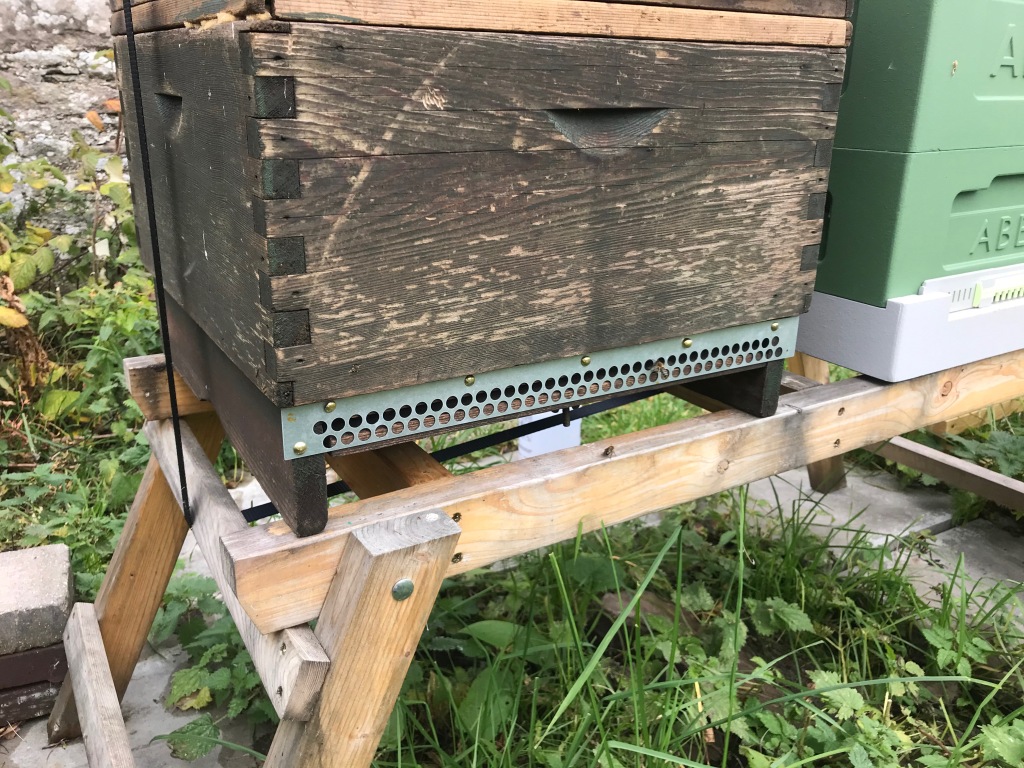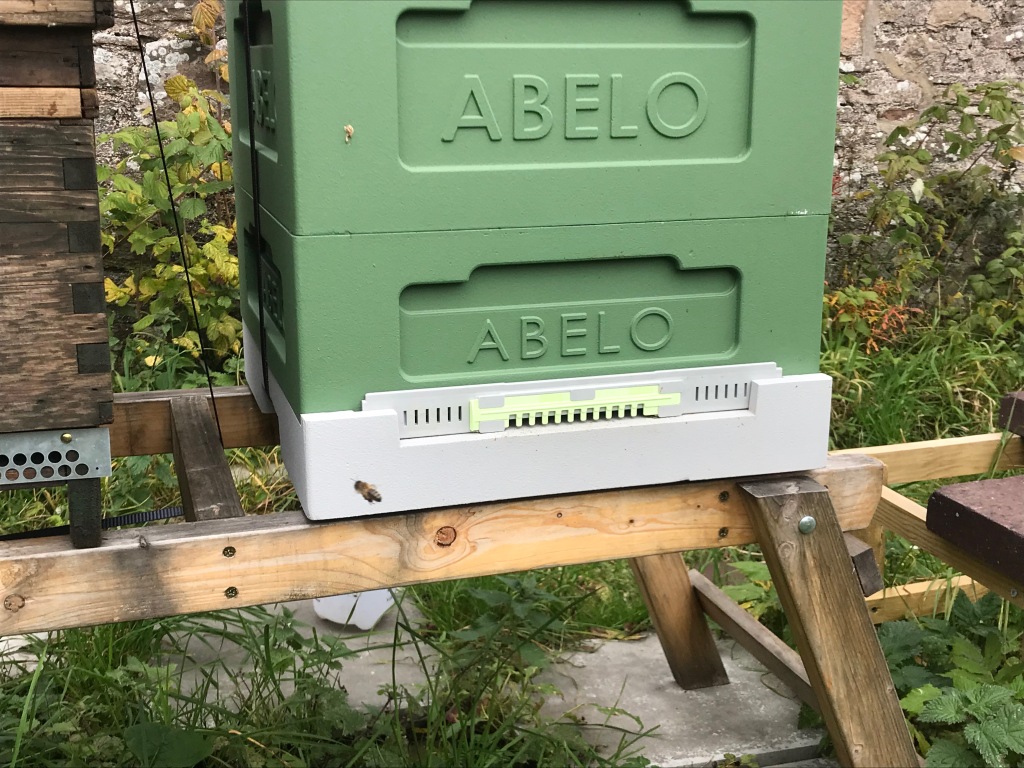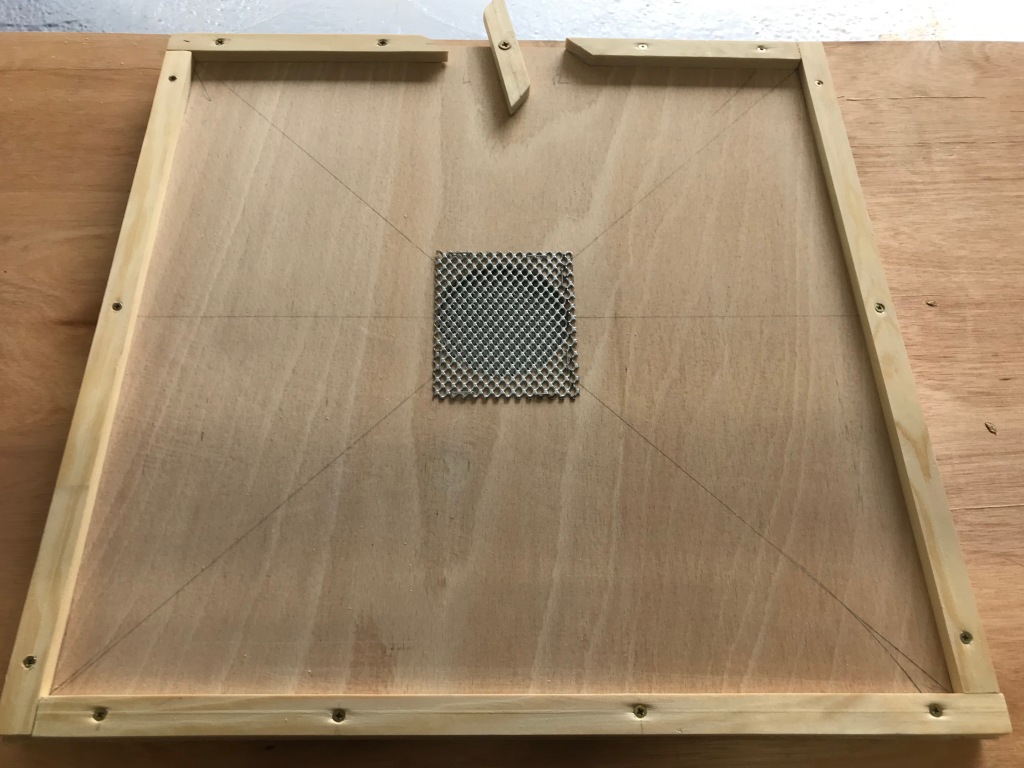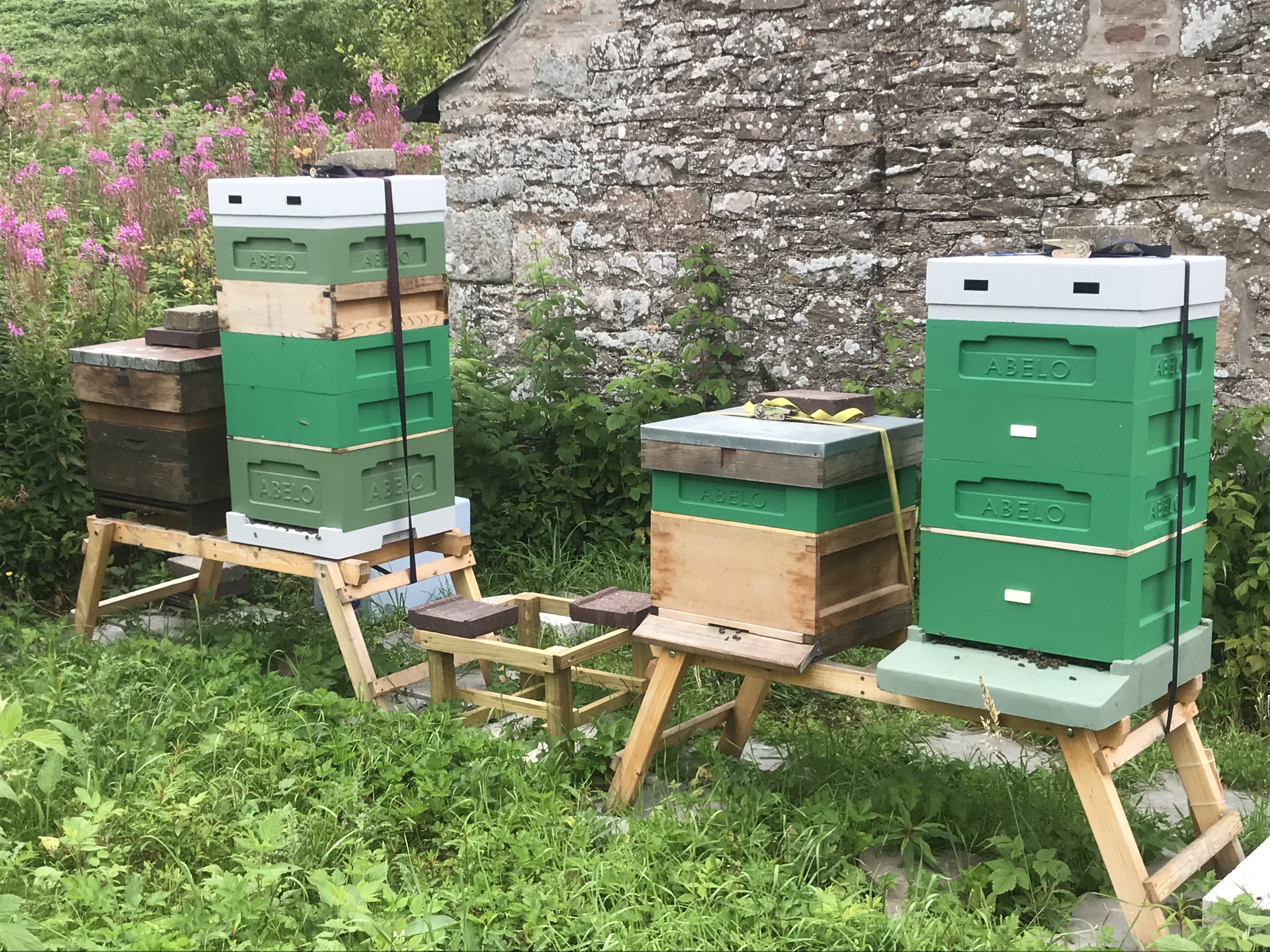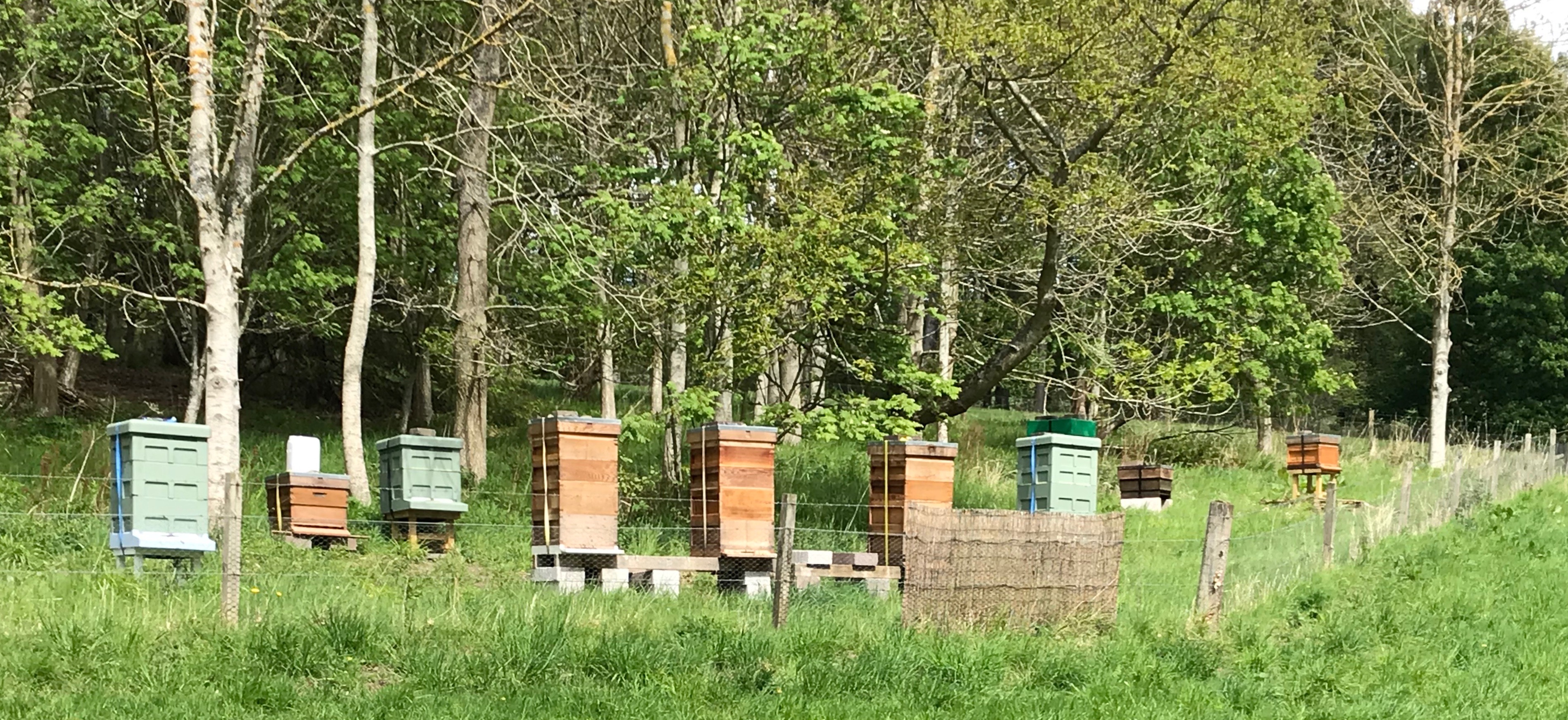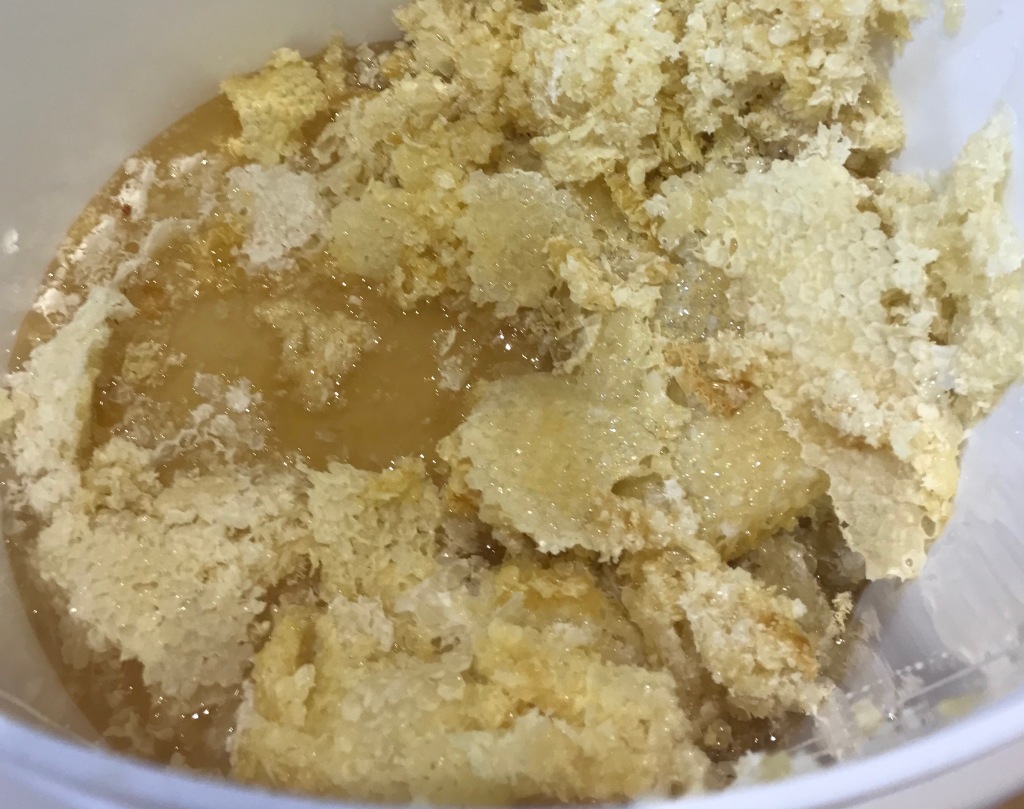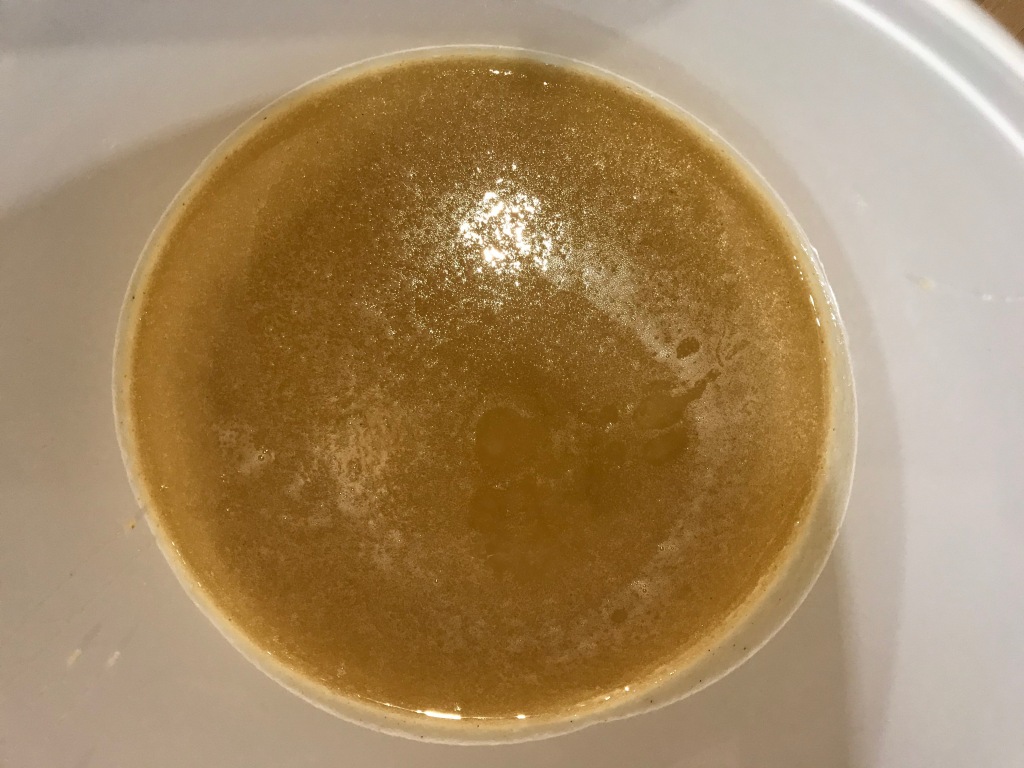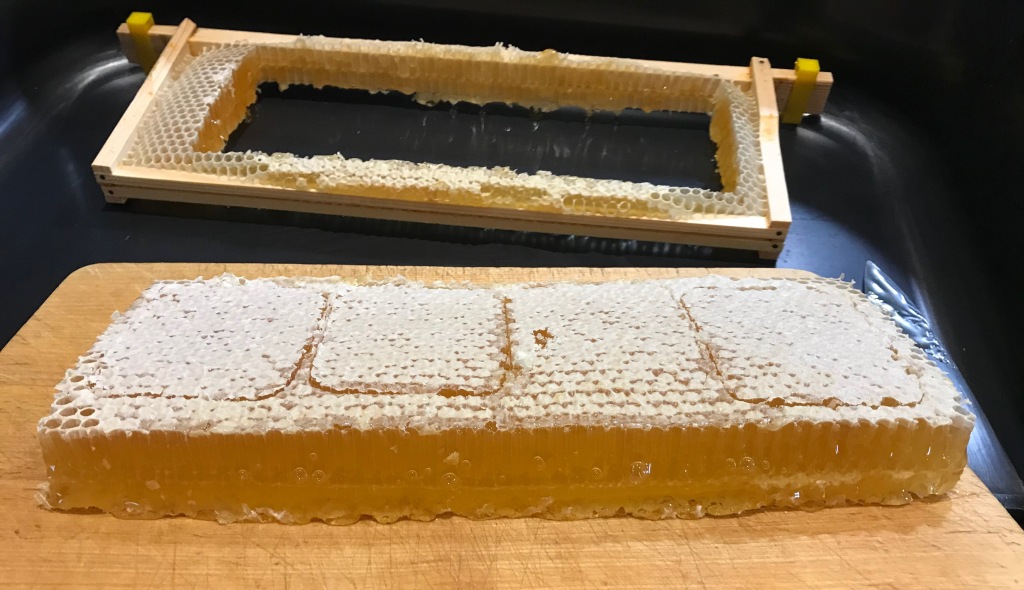I’m very pleased to be part of a group that gives an opportunity to schools, teachers, pupils and the general public of all ages to learn about beekeeping. At Baldragon Academy pupils got involved and they have now seen their bees produce honey. Our association website has now been published.
Uncategorized
Filling Jars with Honey
My first crop of honey for this season was put into 12oz (340g) jars today.
This honey was more suited to being processed as Soft Set Honey because it had a fine grain and took less than 3 weeks to solidify.

The solid bucket of honey was then warmed and softened by bringing its temperature up to 35-40 degrees C and then ‘mashed’ with a large potato masher.
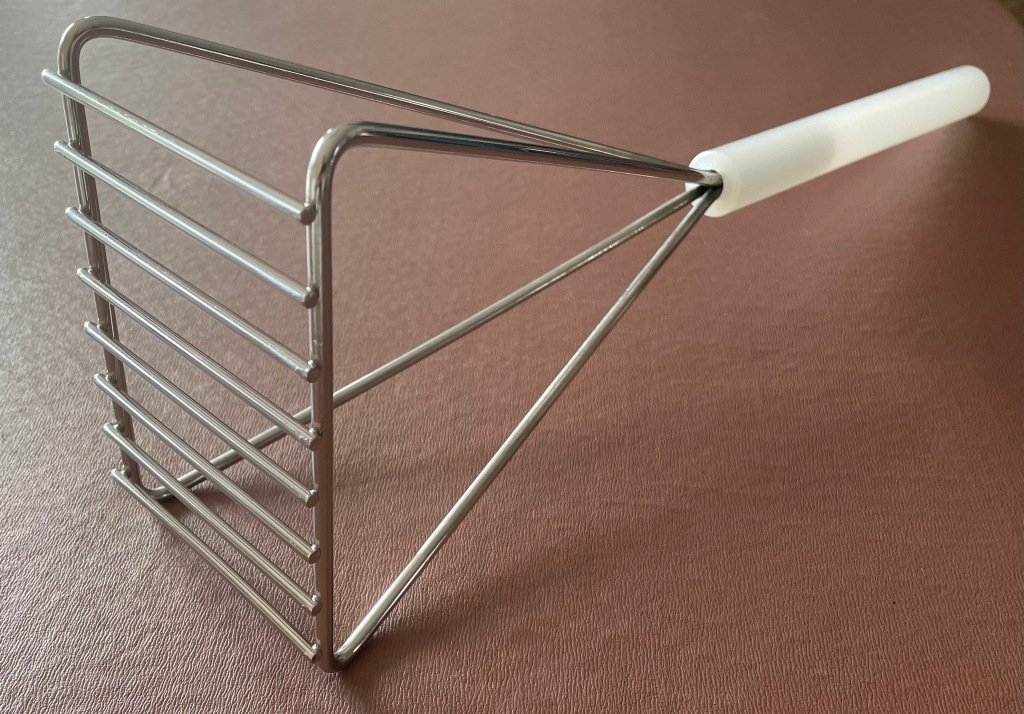
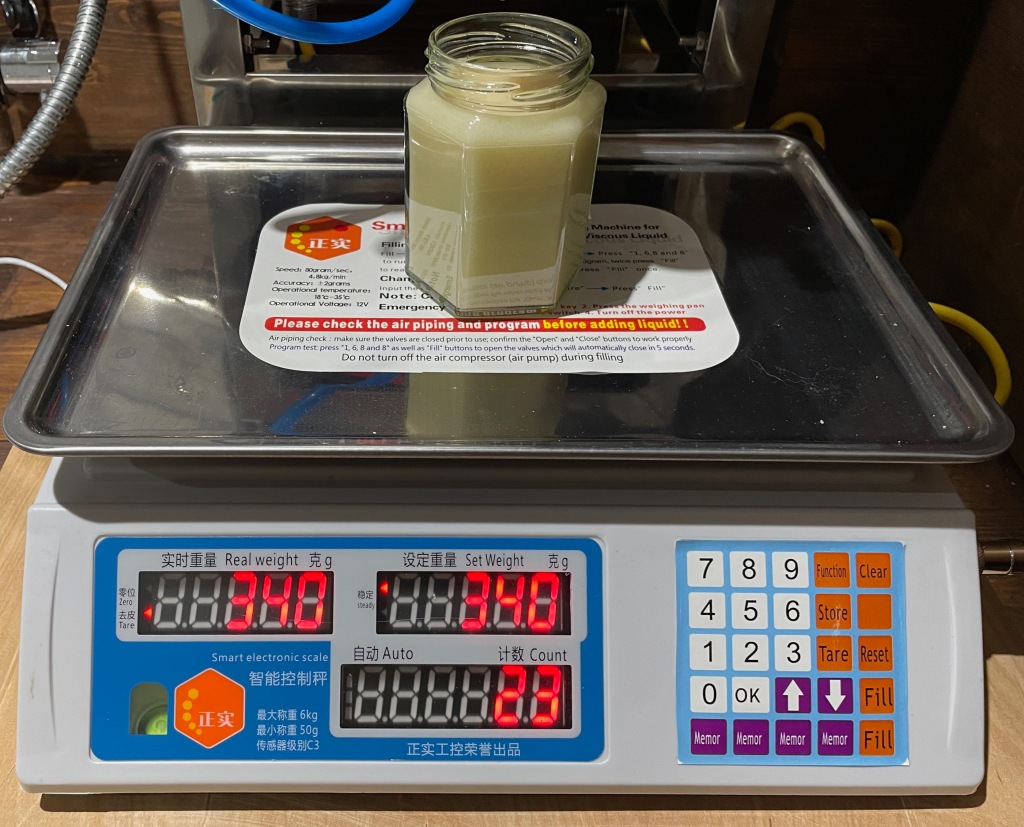
I have invested in a filling/weighing machine this year. I am sharing it with another beekeeping pal – and therefore paid 50% of the cost 🙂
It not only has a time-saving benefit but it provides an exact weight. The machine has a maximum error of 2g but during its first use there was no deviation. It is very easily cleaned.
I was skeptical on how it would work with soft-set honey as opposed to clear runny honey but my doubts were unfounded.
The filled jars will now sit for a couple of days, have labels applied, and be ready for distribution. Happy Days.
A Different Start to my Beekeeping Season
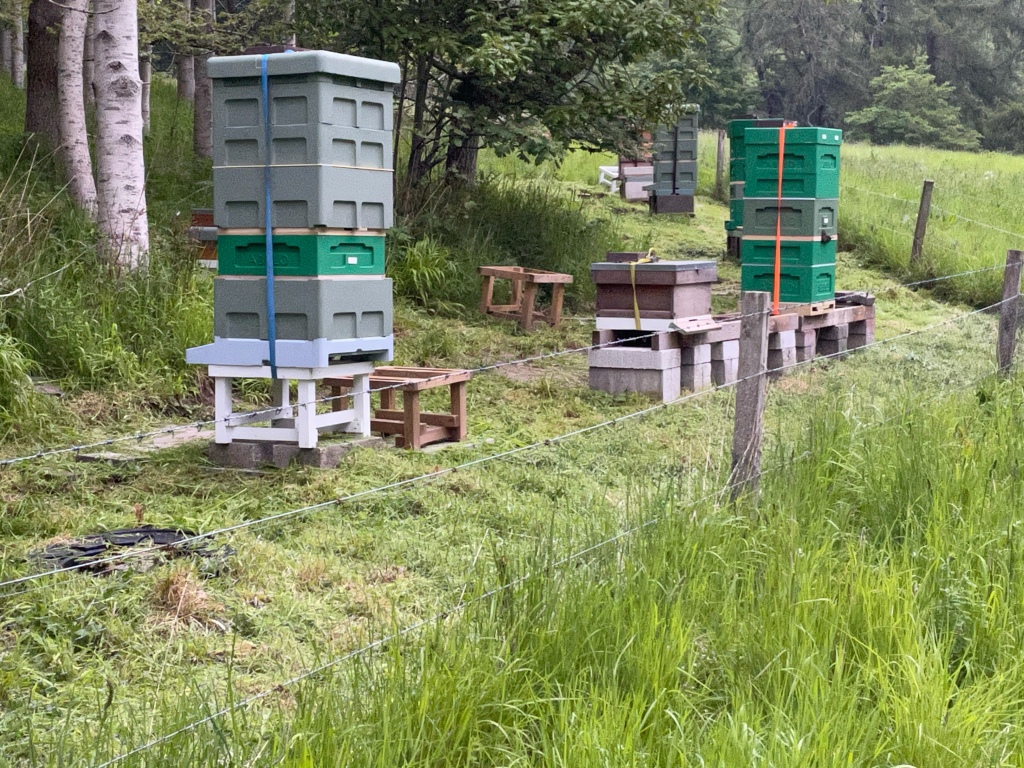
At the start of my beekeeping season (I think of this as being the end of March / beginning of April – but others may look at the beekeeping year differently) there were some very fine days and yet the daily temperatures rarely went into double figures, averaging around 9 or 10 deg C. So at these temperature there is a reluctance to inspect brood for fear of chilling the brood. I am finding, though, that 11 or 12 deg C is an OK temperature for a very quick inspection. And if the sun is out the temperature, locally, is often higher than the average temperature on the weather forecast. The bees are hardy and will be out flying at 8 deg C. I have come to realise that the bees keep on working away and so if there is an extended period of cool and damp weather early on in the season the beekeeper hasn’t had sufficient time to make all the usual checks or manipulate the frames within a double brood box system etc. The bees in the colony continue to increase in number and so the early annual tasks such as finding and marking a queen may become protracted.
We then experienced some very fine weather and everything came into bloom very quickly and consequently the bees were working overtime.
Swarm Prevention & Swarm Control
The ability to ensure sufficient space for the queen to lay and for the colony to expand when the colony needs it is intuitively obvious. To provide too much space when it isn’t needed overwhelms the colony but if you don’t provide sufficient space for them, when they need it, it creates congestion and it will likely trigger ideas of swarming. Keeping the bees busy by getting them to build comb may also stop or delay swarming. But when I think I have done all I can in terms of swarm prevention and I see drones in the colony, and then observe the making of queen cells I realise that the natural instinct for the bees to swarm and continue the development of their specie has kicked in and there is nothing I can do to ultimately prevent this instinct to swarm. It’s then an expectation that there will be imminent hard work required to control swarming.
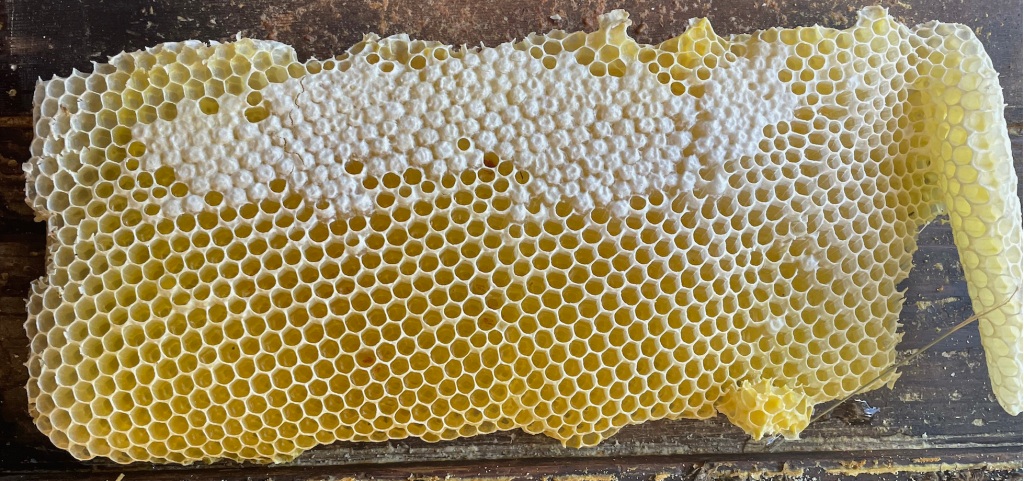
Vertical Splits
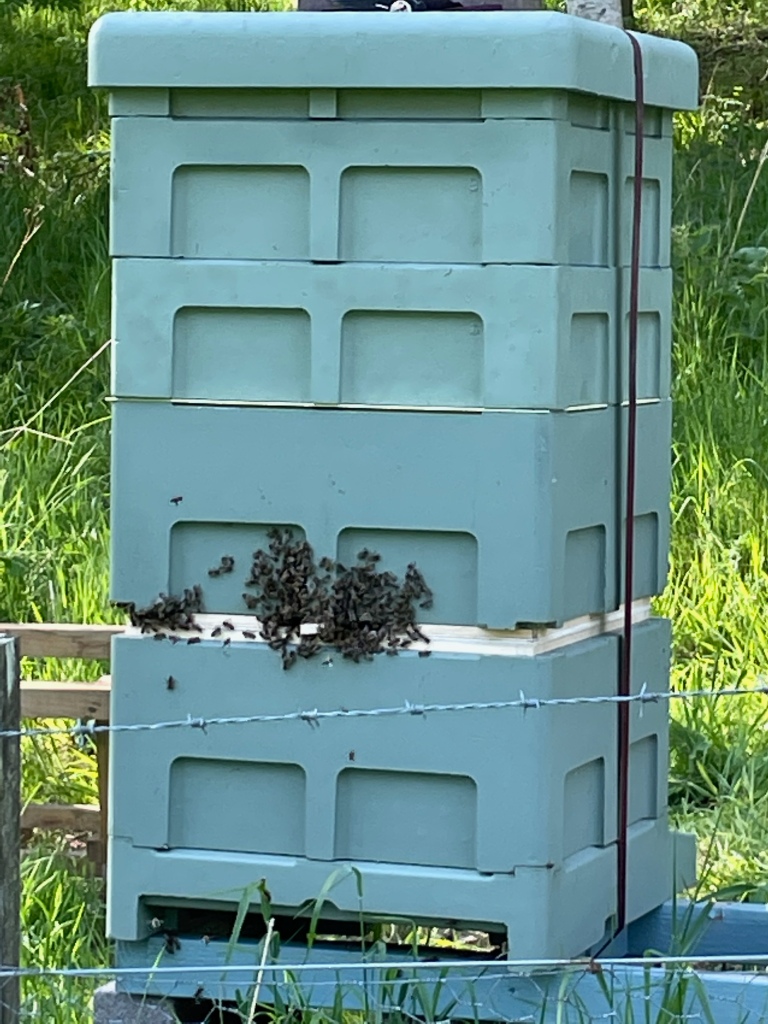
This year, for the first time, I have tried making vertical splits for swarm control. All my eleven colonies, with the exception of one, (I suspect that the only colony that hasn’t tried to swarm has an underperforming queen and will eventually supersede) have now tried to swarm. I have carried out 8 vertical splits, 1 nucleus method, and 1 shook swarm.



Capturing a Swarm
I suspect this swarm was from one of my colonies because for one particular colony, when I returned after 7 days to knock down more queen cells, the bees were so aggresive I had to shut down the hive and vacate the area. So it was very likely that there were several queen cells left in the hive rather than just a single queen cell!

I got a call, early morning, letting me know about this swarm. The bees must have remained on the post overnight. The bees were resistant to smoke and kept clinging onto the post – not wanting to leave it. I initially tried to lure them into a nucleus box with a frame of comb/honey stores. I also offered up frames to the bees on the post. Many bees climbed off the post onto the frames so I placed these frames into the nucleus box and hoped the bees would signal to their sisters that a home was close by 🙂 I left them for about half an hour and when I returned all the bees that had been in the nucleus box had gone back onto the post! What to do? I decided to use my bee brush to physically push the bees upwards but this only resulted in the bees leaving the post, swarming again, and settling on a nearby gorse bush. This was a lucky break. The bees could then be shaken off into the nuc.
Honey
Because it was a slow start to the season I didn’t start removing honey supers as early this year. I currently have 40 lbs of bucketed honey waiting to be bottled/jarred but with more to remove next week. I am going to wait 1 month before putting it into jars. I am advised that by not rushing to jar I can check the honey’s propensity to granulate and therefore determine whether or not that honey is more suited to be runny honey or soft-set honey. Hitherto I have carried on regardless and hoped for the best. Always learning………

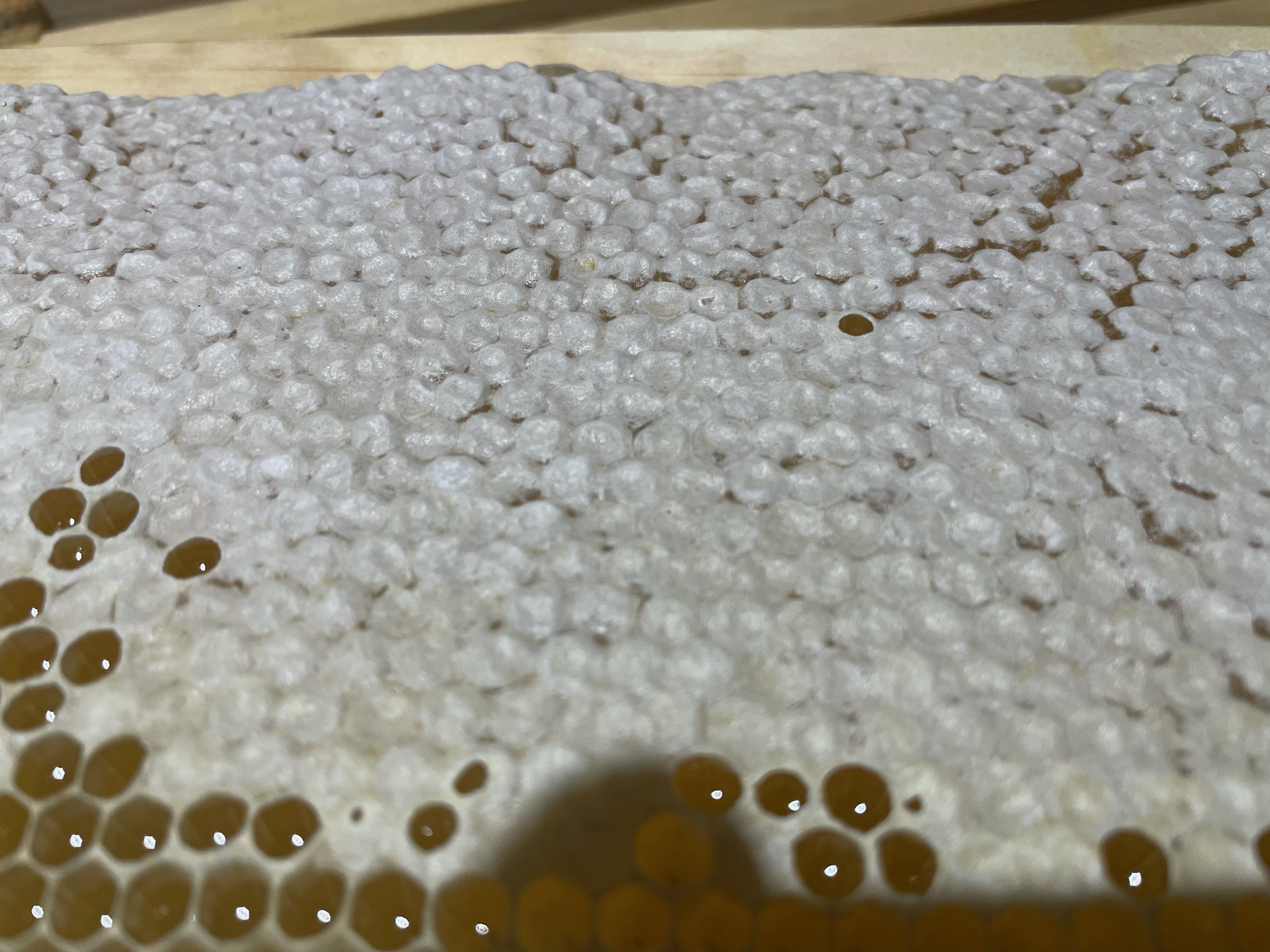

Final Thoughts…..
Bees can become very aggressive when they are queenless and are in the throes of producing a new queen.
The first of my colonies that attempted to swarm this year, and was prevented from doing so by making a vertical split, has now provided a new queen. The queen has successfully mated and is now laying. So the old queen continues to lay in the bottom brood box and the new queen is now laying in the top brood box. The difference in their behaviour from being queenless to having a new and content queen is very marked. The bees are now calm. Oh for calm bees…….
Eventually I intend to unite the 2 colonies. I was finding the work load for 11 colonies was already too demanding………….
I still get a warm glow when I observe a queen on a frame as she moves around with a slow and lumbering gait.
Waste Not, Want Not
Making Mead

Mixing the Must 
Checking the SG before fermentation : 1.010 
Fermentation Pail after 6hrs 
Fermentation Pail after 12 hours
Proverb: If you use a commodity or resource carefully and without extravagance you will never be in need.
One by-product of honey can be Mead or honey wine. And one resource available to a beekeeper is naturally honey, but also honey washings that are produced when reclaiming wax. It is surely a good idea not to be wasteful. It is for this reason that I decided I would attempt to start making Mead this year. It’s also a fun thing to do.
I am making mead for the first time. Years ago, when it was fashionable, there was wine and beer to be made from ‘kits’ bought in a ‘Home-Brew’ shop or even from ‘Boots the Chemist’. I seem to remember that most attempts ended in dissatisfaction 😦
To learn about Mead making I have a fine small book written by Harry Riches, and a booklet (special series) produced by the BBKA, together with YouTube videos from the internet. But as usual, just as all beekeepers appear to always do things differently, it seems there isn’t just one simple standard method of making the mead. For example, some advocate moving the must straight into a demijohn after it has been mixed and others prefer to leave the must in a fermenting bin/pail for the first couple of days to prevent over-flow when the initial fermentation period may be vigorous. I have chosen the latter for my first attempt. It is a case of trial and error.
It was an odd feeling to use a hydrometer again. The last time I used a hydrometer was probably when I was a cadet in the Merchant Navy. But then I was using it to measure a Dock Water Allowance for calculating the change in draught of the ship when it moved out of the dock water into the salt water of the open sea. To get that simple calculation wrong could mean not taking enough cargo/payload and have the ship at a lighter draught than it’s load lines would allow or, on the other hand, find the ship was overloaded. Whereas here I am determining if the must has sufficient honey to achieve the desired alcohol content. This is not so critical and not such a high-profile mistake if things go wrong 🙂
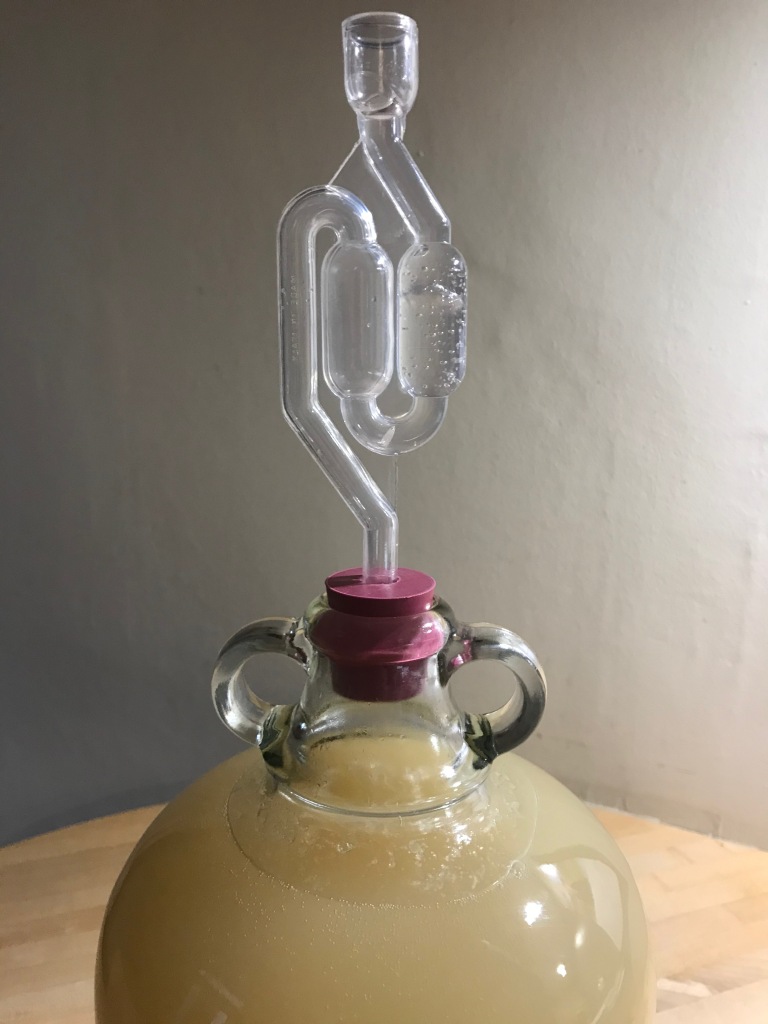
There is now a sweet and heady smell in our kitchen.
Both batches of mead have been made using a basic recipe of ingredients: Honey, water, cold tea (tannin), juice of 1 lemon (acid + vitamin C), yeast nutrient and yeast. The only difference between the two is the water. For the first demijohn I used tap water and for the second demijohn I used honey/wax washings. At this stage the apparent difference between the two is in the colour – and the first demijohn is fermenting more vigorously.
Other Stuff
Mouse guards were fitted during the first week of October and Apivar strips will be removed next week.
I have started making split-boards for use next year. Two have been completed and ten more to do.
Reflections On My Beekeeping Year 2020
All my six colonies survived the winter, including the nucleus hive. I was keen to make my first inspections as soon possible, weather dependent, in order to see the status of each colony (stores available, queen laying, space available etc.) and also to find and mark each queen – as a colony grows in size it makes it more difficult to find an unmarked queen. It doesn’t take much deduction to realise that if you are able to find the queen with relative ease when you need to, i.e. at a time when required to perform swarm control, (it is so much easier to find the queen when she is marked) then the job of ‘swarm control’ if/when that time comes is more easily managed. I found and marked 5 queens without too much difficulty but there was still one queen that eluded me.
Coronavirus and ‘lockdown’ arrived. It didn’t make that much difference for me – beekeepers were still allowed to travel and tend their hives. Bees are classed as ‘livestock’ and there remains a requirement to look after them and keep them disease free. Having said that, I did relax my inspection regime and because I didn’t maintain a strict 7-day inspection interval two of my colonies swarmed. I managed to capture one of the swarms but the other got away.
Swarm Control Methods & Swarms


ALL my colonies made an attempt to swarm this year so I was able to make increase – I now have 12 colonies instead of the original 6 that I started with in March. But when a colony tries to swarm there are at least 3 weeks lost in terms of building up the colony and also in a colony’s ability to deposit honey in the supers. During this time I also found that for all the colonies with double brood boxes any honey the bees made was deposited in the top brood box and not in the super. The obvious way to prevent this from happening is to do everything you can to prevent them from having the urge to swarm in the first place. But I am also going to try vertical splits next year and see if that works well for me. It is better to try to see if different methods can work rather than discount them on hearsay. You are only qualified to make judgement if you have tried something for yourself. Later on the plan would be to unite the vertical splits. Having increased to 12 colonies I now know how much work is involved in maintaining them and how time consuming it can be, especially when they are probably all at varying stages.
Apiary #2

At last year’s Food & Flower Show I was offered a site on a farm to keep more bees. I decided to take up the offer because it can be advantageous to run two apiaries that are more than 3 miles apart. My preferred method of swarm control, so far, has been to use the ‘nucleus method’ and having a second apiary can help to ensure bees will not leach away from the nucleus back to their parent colony. This second location is also close-by to heather and although it does not provide the excellent forage that my first apiary has, from March through to August, it does help to extend my beekeeping season into September and is particularly good in August. The heather came into flower late July and finished around the first week of September.
Installing Bees at Apiary #2
A Variety of Hive Types & Equipment
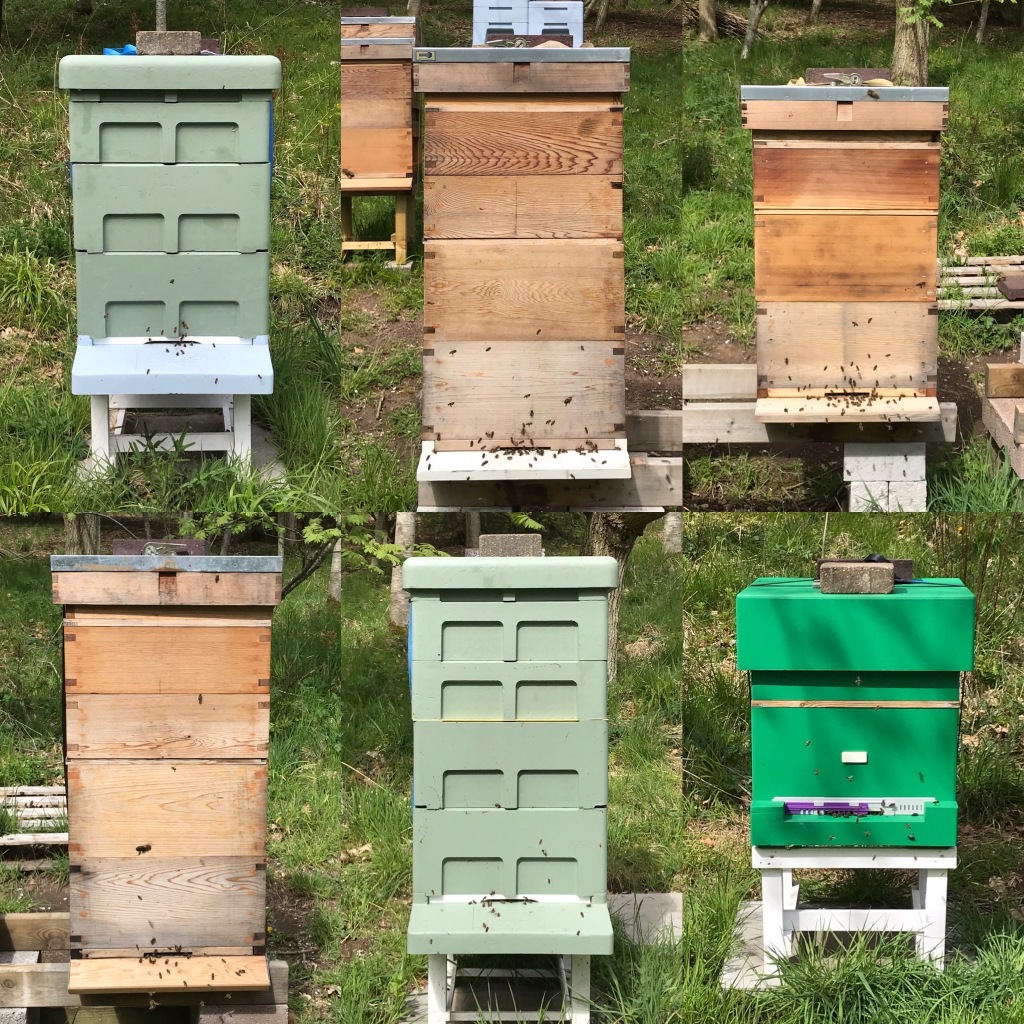
Brood Frame – worker brood + honey stores

Going Strong at Both Apiaries
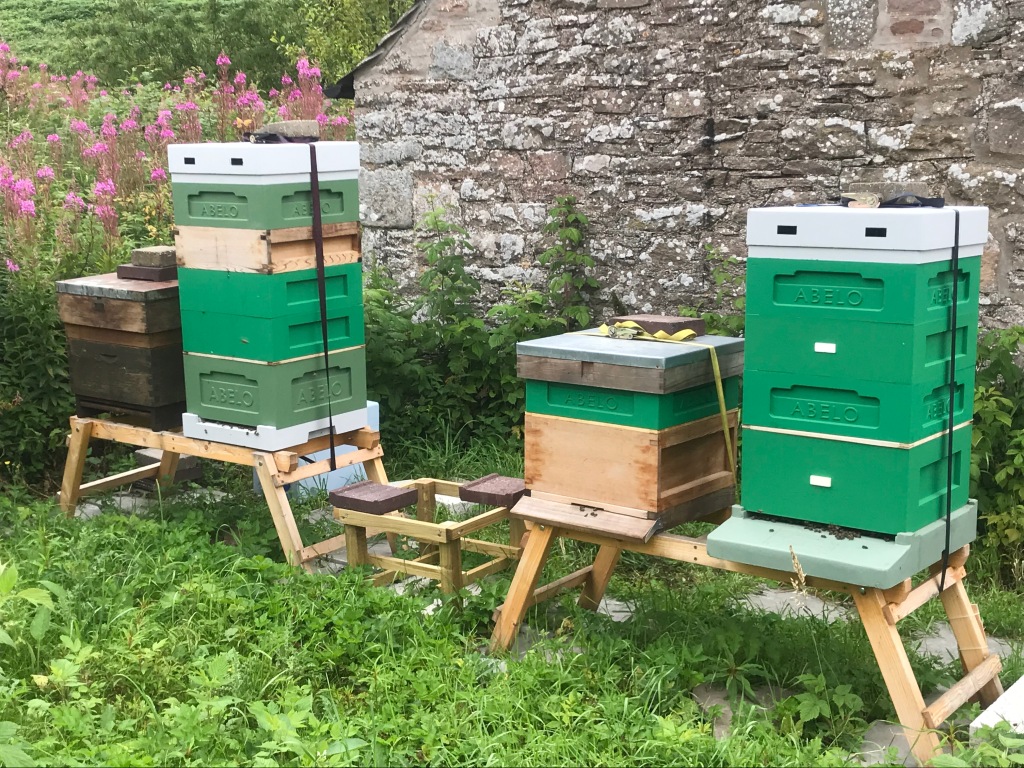
Honey Processing

Selling At A Local Shop
There has been a good honey crop this year. With over 200 lbs of honey and 13 lbs of cut comb I had sufficient honey to sell. I approached ‘Love your Planet’ and they were happy to sell some honey for me. ‘Love Your Planet’ were also selling honey from another supplier so the price charged for my honey really needed to match that of the other seller. If I were to consider this experience strictly as a business proposition then the money I made from my honey when selling via the shop was disappointing. But it was a process to go through. And it helped to recover some costs……
Pressing Heather Honey
Heather Honey is thixotropic i.e. it becomes less viscous when pressure is applied to it. It has to be pressed instead of extracted from the frame using centrifugal force. I bought a very nice ‘fruit’ press which worked very well. Initially the process of pressing the honey out seemed quite slow and laborious but after a few goes at it I developed a better technique. It is an enjoyable process. All the honey taken from apiary #2 was a ‘Heather Blend’ because I didn’t remove any blossom honey from the hives before the bees started foraging from the heather. I will endeavour to try to get some pure Heather Honey next year.
Courses:
I had been booked on an Intermediate Handling Skills course this year but due to Covid-19 sadly that course, along with many other courses, had to be cancelled. Instead there have been a plethora of online presentations and webinars to take part in. They ranged from monthly online presentations from my local association, to webinars from the Scottish Beekeeping Association and online Advanced Beekeeping Courses from renowned Master Beekeepers. These were really good and tremendous value.
For the rest of this month (September) I am feeding the bees in preparation for Winter and I have administered medicine to combat varroa mite. There’s still more to be done through the winter but next March the work load will start to ramp up again for another beekeeping season.
Winter Reading:

A Salutary Lesson
I’m into my 4th year and it’s the first time any of my own bees have swarmed. Well there’s a first time for everything. Maybe I just took my eye off the ball. I had attempted to ensure they had sufficient space – all colonies have double brood boxes bar one, and if anything, due to Covid-19 I have added supers earlier to at least 2 colonies than I normally would have. My crime was not to stick rigidly to 7-day inspections. On a day when I should have been checking for queen cells I told myself that the weather wasn’t good enough, that the temperature was too low. I’ve now decided that looking for queen cells when the temperature is around 10 or 11°C is necessary. My benchmark has always been 12°C or above for checking the brood. And even that may be considered low as some (books) recommend 15°C and beekepers may advise to never check unless you can comfortably wear a short sleeved shirt! Heavens above – I wouldn’t be able to make an inspection until late May/June if that were the case! But it’s clear that it’s in their DNA to swarm because that is their method for making increase of their specie. Hence inspections are required every seven days (unless your queen has a clipped wing and then the inspection interval may be broadened). 7-day inpections. Will I say it again?
Three days ago I arrived at the apiary to see two swarms clinging onto the nearby fence posts. They were obviously mine. So which hives did they come from? Observing the relative activity to the entrance of each colony made me think they had come from colonies #1 & #4. Another strong hint was their relative positions on the fence posts 🙂 The queens of these colonies are marked green and red for 2018 & 2019 respectively.

At this stage there is only partially good news to this story. By placing an empty nucleus hive, sprinkled with lemongrass oil, next to the upright post I was able to lure the bees off the post and then transfer them into a new hive. (The entrance to the NUC was too small for all those bees to gain access very quickly!).
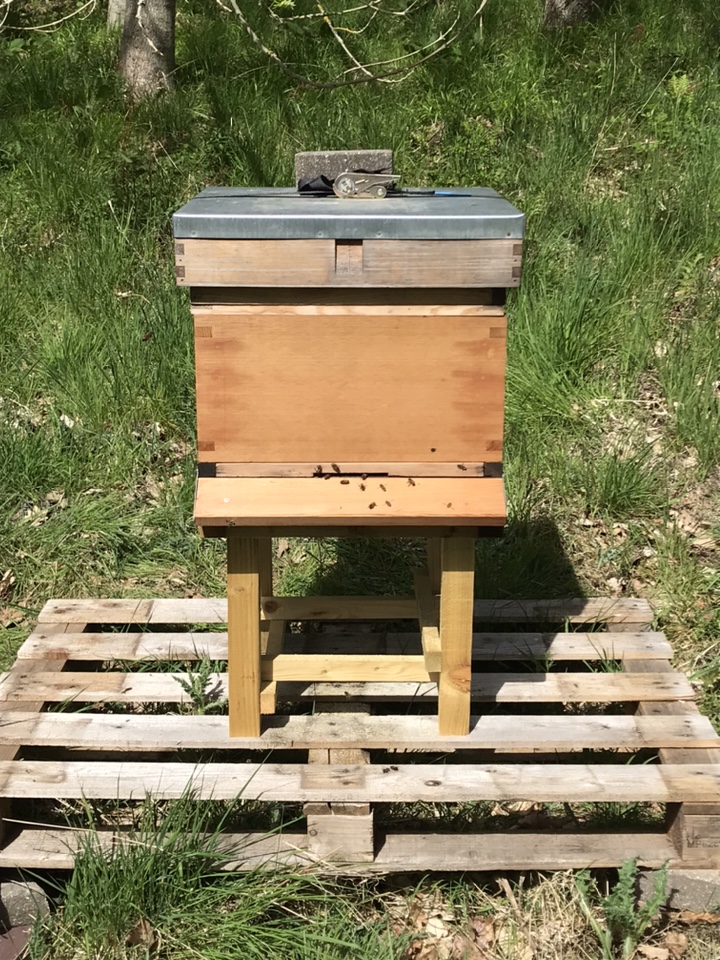
Yesterday, 2 days after they had swarmed, I went back to check on them. I added more frames of foundation and provided them with 1:1 sugar syrup so that they can build the comb. The bees are occupying between 4 and 5 frames. They are not going anywhere soon.
Sadly, the other swarm up and left. All I could do was watch it head South. It was quite a site. But I haven’t yet given up hope. On the day of the swarm, and also during yesterday afternoon I observed scout bees checking out the bait hive. I had been hoping the swarm would return to the bait hive but as of yesterday afternoon that hadn’t happened. According to Tom Seeley (a revered professor of biology who has studied swarm intelligence) a swarm may take up to as long as a week before they finally decide upon their new home. It all depends on whether they can agree with each other or not! It’s difficult to believe that the food they have gorged prior to swarming can last them as long as seven days but apparently it can. Bees are able to regulate the amount of fuel they consume much better than humans and only use up their fuel when they need to expend energy. If they are simply lying around they will not use it. Wish I could do that.
Anyway, the bees continue to survive. They continue to make honey. They remain healthy. And so it goes on. Everyday is an opportunity to learn more.
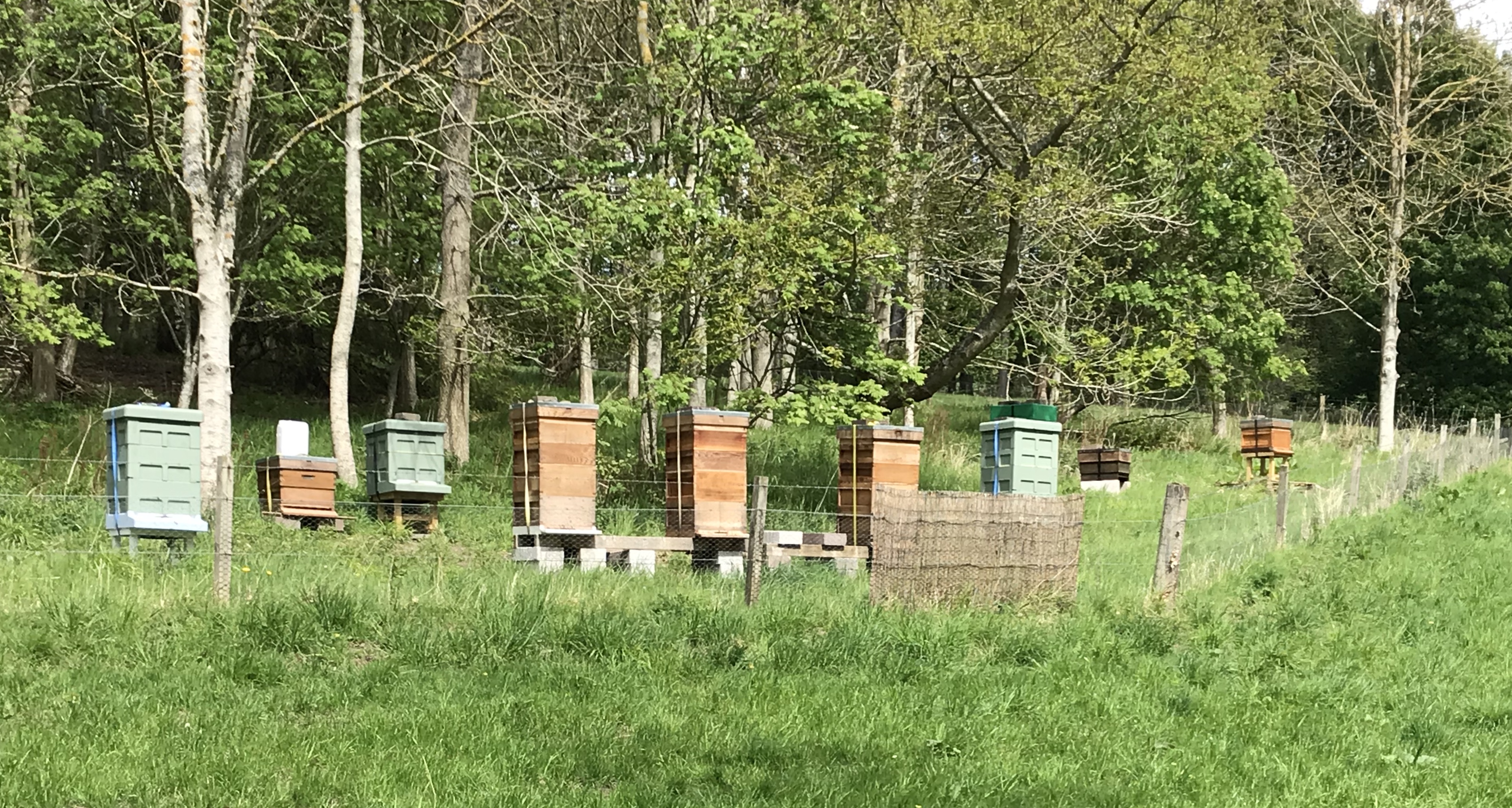
Spring 2020

Covid-19
The coronavirus global pandemic is devastating. Many lives have been lost. My heartfelt wishes go out to all the families that have been affected by it.
For beekeepers here in the UK a joint statement was issued by Defra/Scottish Government/Welsh Government on 25th March 2020. It informs us that honeybees should be considered as livestock, and will be subjected to the usual health checks from bee inspectors. We are therefore required to maintain healthy colonies and report any health concerns as usual, ensure our bees do not die of starvation and prevent swarming. We have permission to tend our apiaries to look after our colonies but we must abide by the government guidelines with social distancing and only travel when necessary. Beekeeping, for now, needs to be a solitary occupation. A ban on travelling to out-apiaries has not been imposed yet, although we should not move our hives to different locations in search of forage (taking bees to the heather is therefore not allowed) and beekeeping is not an excuse for leisure travel. It’s a scary thought that individuals may have the virus and not know it and the virus can be passed onto others by touching the same object. I’ll be taking the precaution of wearing nitrile gloves and making use of antibacterial wipes, where nessary, when travelling to and from my apiary.
It may be advisable, given these circumstances, to add supers to our colonies earlier than we may normally have considered and it may be a good idea to deploy bait hives soon just in case government advice becomes more restrictive.

A bait hive in position.
An Introduction to Beekeeping

I gave a talk to the Broughty Ferry Rotary Club on 11th February. The venue had good facilities and some good questions were asked. I’m not sure if I gave that lady, with head in her hands, a headache or not!
Coming through the winter
My six colonies are all surviving. With temperatures nearing double figures I have observed bees leaving and entering their respective hives. They have sufficient stores to last them for another week to 10 days by which time the weather is forecasted to have improved sufficiently to warrant a first full inspection of the brood. Our clocks were advanced 1 hour to BST at the weekend and with it there may be a glimmer of optimism for the weather to improve. As if the bees were on the same wavelength, on Sunday they were bringing in large amounts of pollen – at a temperature of only 8° C. So far there has been a gradual development of spring buds – very soon they may all burst into life.
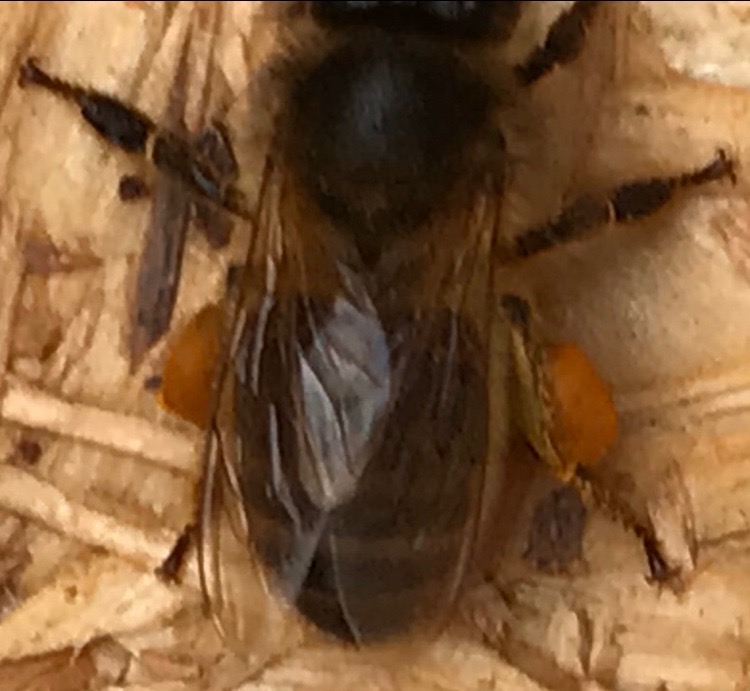
My apologies for the poor quality close-up photo.
Local Association
Our association provides introductory classes for people wanting to start beekeeping. These classes are usually timed to take place in February and March of each year and lead up to the start of the season. As a member of the association I volunteered to help out at the classes where I was asked to demonstrate how to make up a frame, explain how I approach and open a hive up for inspection, and also how I clear bees from supers in readiness to extract honey. Our association website provides PowerPoints and PDFs for the group to access. Sadly the final class for the beginners’ group had to be substituted with an online meeting/presentation because of the coronavirus pandemic. Apiary visits for the beginners’ group have been postponed until further notice. I am of the opinion that anyone wishing to start beekeping this year should delay until next year when they will hopefully have the chance of better support. If beekeepers in our association have to isolate, there is a duty of care to assist them by looking after their bees where possible.
Take care.
A Mild Winter (January 2020)
SO FAR this winter has proved to be a mild one. There have been a few cold nights when there have been clear skies and temperatures have fallen to about -6 deg C but mostly daytime temperatures have remained above freezing and often around +6 deg C. Yesterday, 22nd January, the temperature rose to 11 deg C, although the actual temperature at my apiary was +8 deg C. There was a light wind from the SW of about 5 mph and the apiary was bathed in sunlight. It was therefore an opportunity to observe if there was any activity at the entrances to my hives. The video clip below shows the activity at colony #3. It is a colony of black bees that has a 2019 queen and is housed in a brood and a half. I was delighted to observe the activity at the entrance to the hive which was my confirmation that the colony is strong and surviving.
With a mild winter the bees are not going to cluster as often as they might do when temperatures are lower and so they are likely to use up more food stores. I supplement all my colonies with bakers’ fondant as an insurance that they will not run out of stores and die of starvation. Today, all colonies have a good supply of fondant so they can consume it if they need it. And I plan to make another quick check in about 3 or 4 weeks from now.
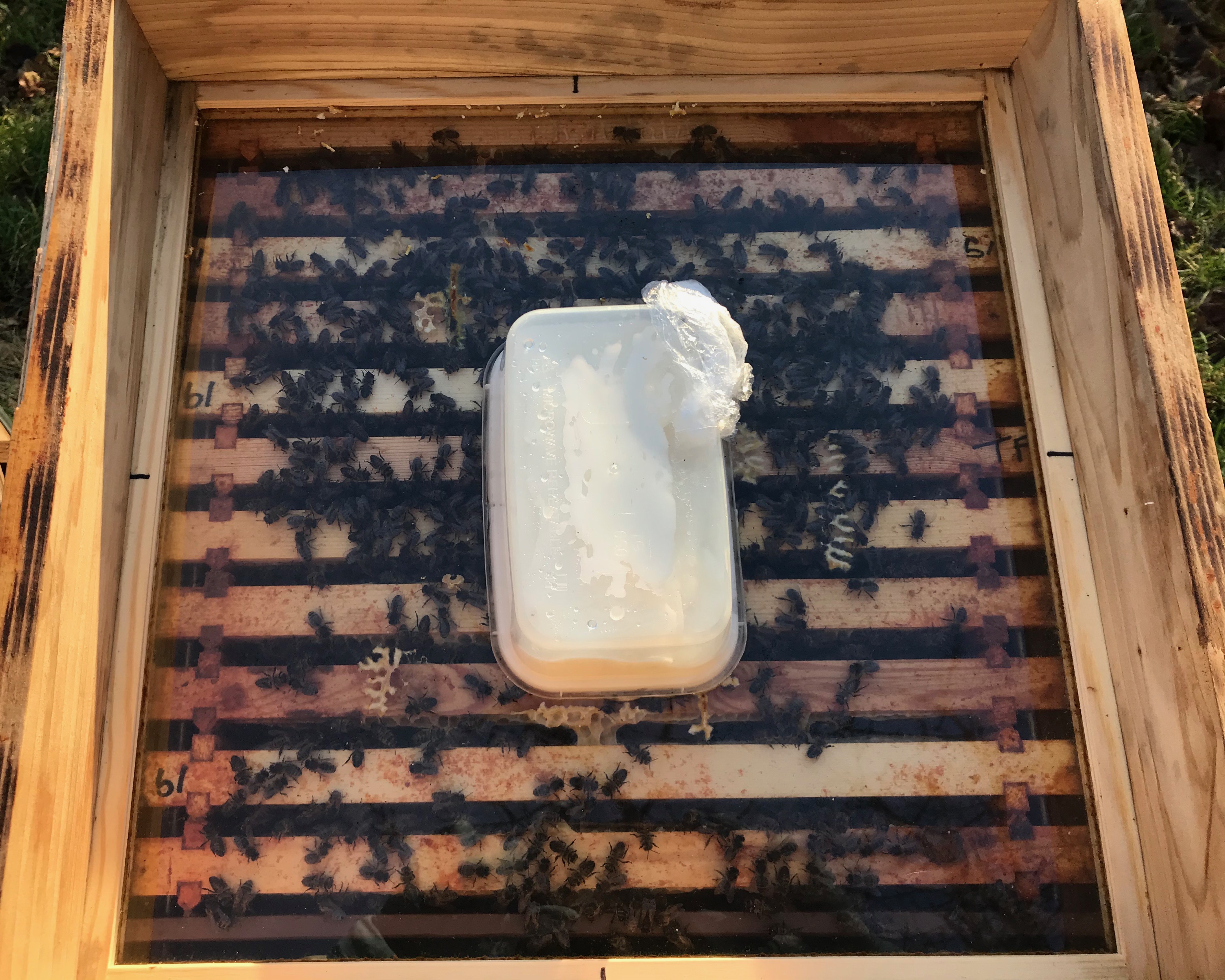
The above photo is of colony #2. The roof and top insulation has been removed to show some of the bees moving around the top bars in the hive (Black bees with a 2019 queen housed in a double brood box). There is 800g of fondant provided in an upturned tub placed over the central hole of the see-through ‘quilt’. This fondant has hardly been touched since it was first put into position back in October.
My sixth colony is housed in a poly NUC. This is the first time that I have attempted to overwinter a colony of bees in a NUC. So far so good as the video clip below shows good activity at the entrance to the NUC. At the time of taking the video I had just taken a quick look into the feeder, where there is a supply of fondant. The NUC had still to be secured with a ratchet strap.
I passed my basic beekeepers practical/oral exam with SBA and was given the certificate in November 2019.
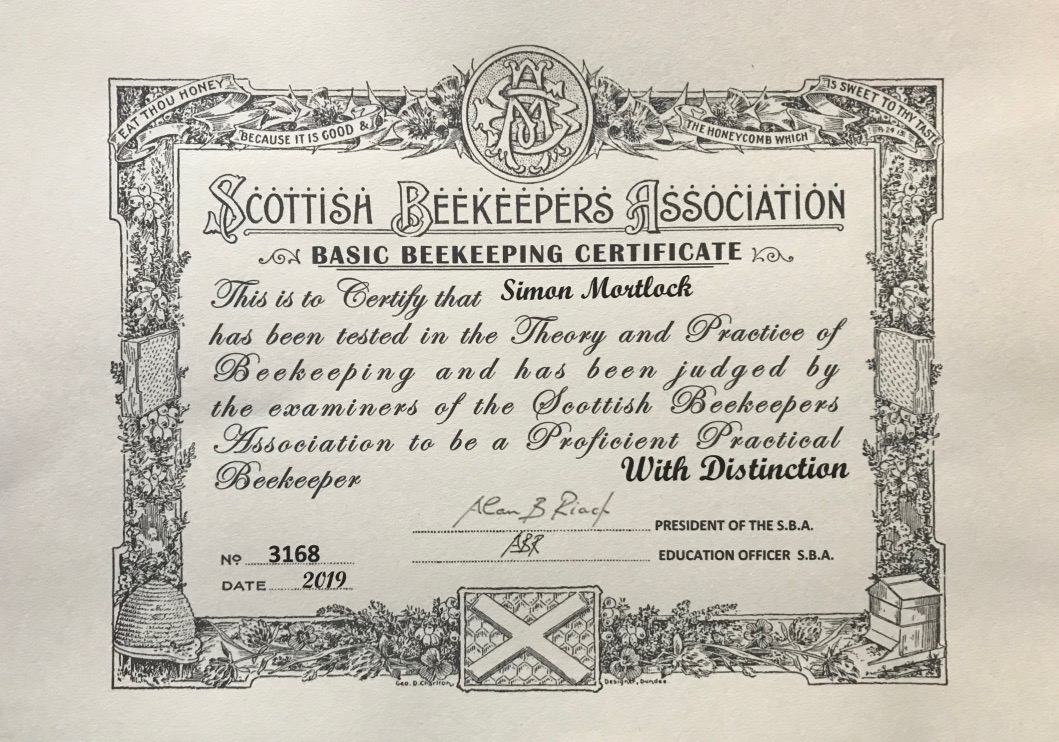
I haven’t yet turned towards studying for the modular exams but in an attempt to keep thinking about beekeeping I have agreed to give a talk, next month, to the local Rotary Club on the subject of beekeeping. I will not be giving the talk to fellow beekeepers so I won’t feel intimidated 🙂
Best Wishes to All for 2020.

October 2019
I’m coming into my 3rd winter of beekeeping. As time goes by I am learning from my mistakes, copying what has worked well so far, and preparing for what will come next.
Feeding in Preparation for Winter
Taking all the advice I can from SBA etc. the consensus seems to be that I need to have at least 18kg of food on board each hive before the end of September. You can continue feeding in October if using inverted syrup but stop feeding winter strength (2:1) sugar syrup by the end of September. In reality my colonies were all hungry. With the exception of 1 colony that only needed 17kg the rest all wanted over 20kg and one colony consumed as much as 27kg. Heavy!
I have cedar wood hives and poly hives in the apiary. And I chose to use a ‘Paynes’ poly feeder for the poly hives and an ‘English’ feeder for the wooden hives. Both types of feeder are excellent for providing the bees with syrup but when it comes to removing the feeders after the bees have had their fill the ‘English’ feeder is much easier to remove.
‘Paynes’ Poly Feeder (central weir)
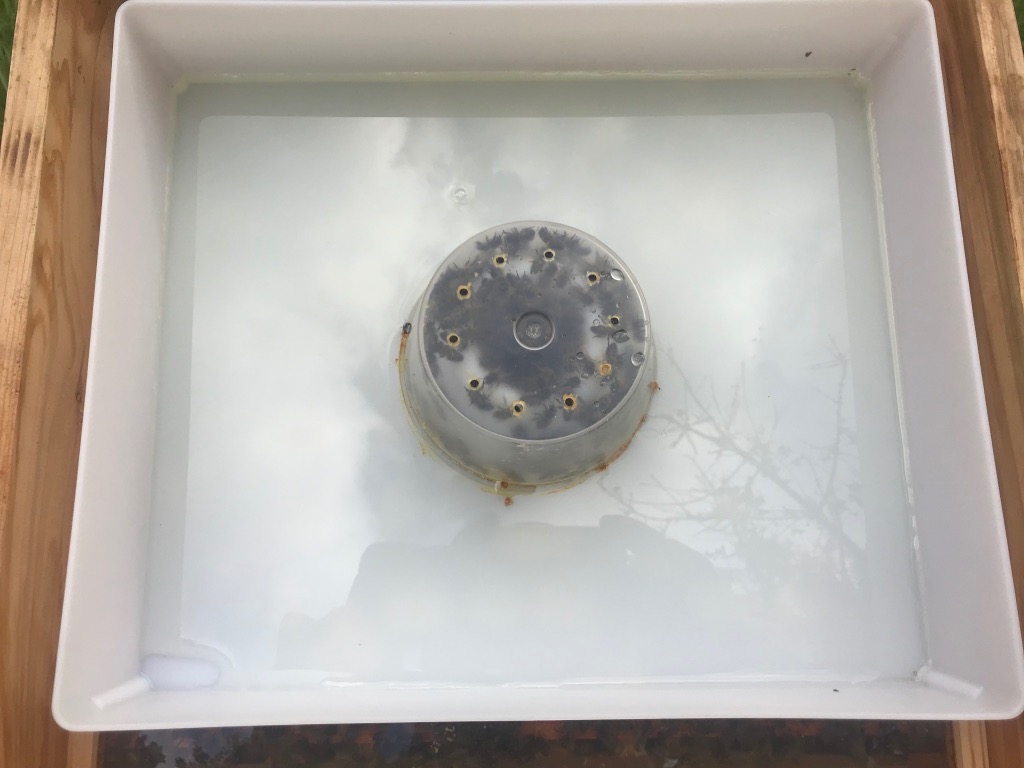
‘English’ Feeder (circular weir)
When the bees have consumed all the sugar syrup in the feeder there are still many bees that remain within the weir.
So how to remove them? The ‘English’ feeder has a circular ‘cup’ that has holes in it’s top. So smoke can be used at first. But that invariably doesn’t work. So, remove the complete feeder away from the single hole in the quilt/crown board that is below it. Then remove the quilt/crown board. A gentle twist of the cup removes the cup from the weir and then the bees can be shaken out of the weir onto the top bars in the brood box. Place the, now empty, feeder to one side and replace the quilt/crown board back onto the brood box. I then put a piece of perspex over the hole in the quilt/crown board to prevent the bees from moving up into the roof space.
But the ‘Paynes’ poly feeder is more problematic in it’s removal because the central plastic cover that goes onto the central weir is not easy to prise open. The bees naturally want to cement the perspex cover into place and it’s a devil of a job attempting to delicately free the bees from the weir. And because the poly feeder fits directly over the brood box the bees in the brood box are fully exposed when the poly feeder is removed.
Varroa Control
As part of my Integrated Pest Control I have been in the habit of using APIVAR strips to reduce the levels of varroa mite in all of my colonies. APIVAR strips are left in each hive between 6 to 10 weeks according to the size of the brood. I am keen to apply these APIVAR strips at the beginning of September because they can then be removed in October. So the sooner I am able to insert them the sooner into October I am able to remove them. And when taking the deterioration of the autumnal/wintry weather conditions into account it is a big factor. I am very conscious of needing to carry out the task as quickly as possible so as not to reduce the temperature of the brood nest unduly. The strips can be difficult to remove because the bees ‘glue’ them into position and a pair of pliers are a necessity to aid removal. And even then it is not a straightforward task, particularly when one or more feisty bee decides to bombard your veil as you attempt to work as briskly and easily as you may. But I’m sure I wouldn’t be happy if I were to be suddenly succumbed to a reduction in temperature and to see a monster metal contraption bearing down upon me! But hey bees, don’t you realise I am doing this for your own good? Do they listen?
So at this time next year I am contemplating substituting the APIVAR strips with ‘VarroMed’ which is another product that has recently been made available. It has natural ingredients of Formic acid and Oxalic acid hydrate. But more importantly it has a 0-days withdrawal period and can be used with and without brood. I have heard good reports of this product’s ability to reduce varroa mite levels to as low as reasonably practicable.
I will return to my apiary within a couple of days to adjust the entrance reducers on each hive. This is to prevent mice entering the hives when temperatures reduce.
Heather Site
I have been offered a site close by to the heather where I can temporarily move 2 or 3 of my hives around the middle of July and then return them to my apiary around the end of August. In this way I can obtain some heather honey. This is a practice followed by many beekeepers in Scotland and I am keen to attempt it for the experience even if I don’t continue to do it on an annual basis. It will be more work and more to learn so over the winter it will be part of my education.
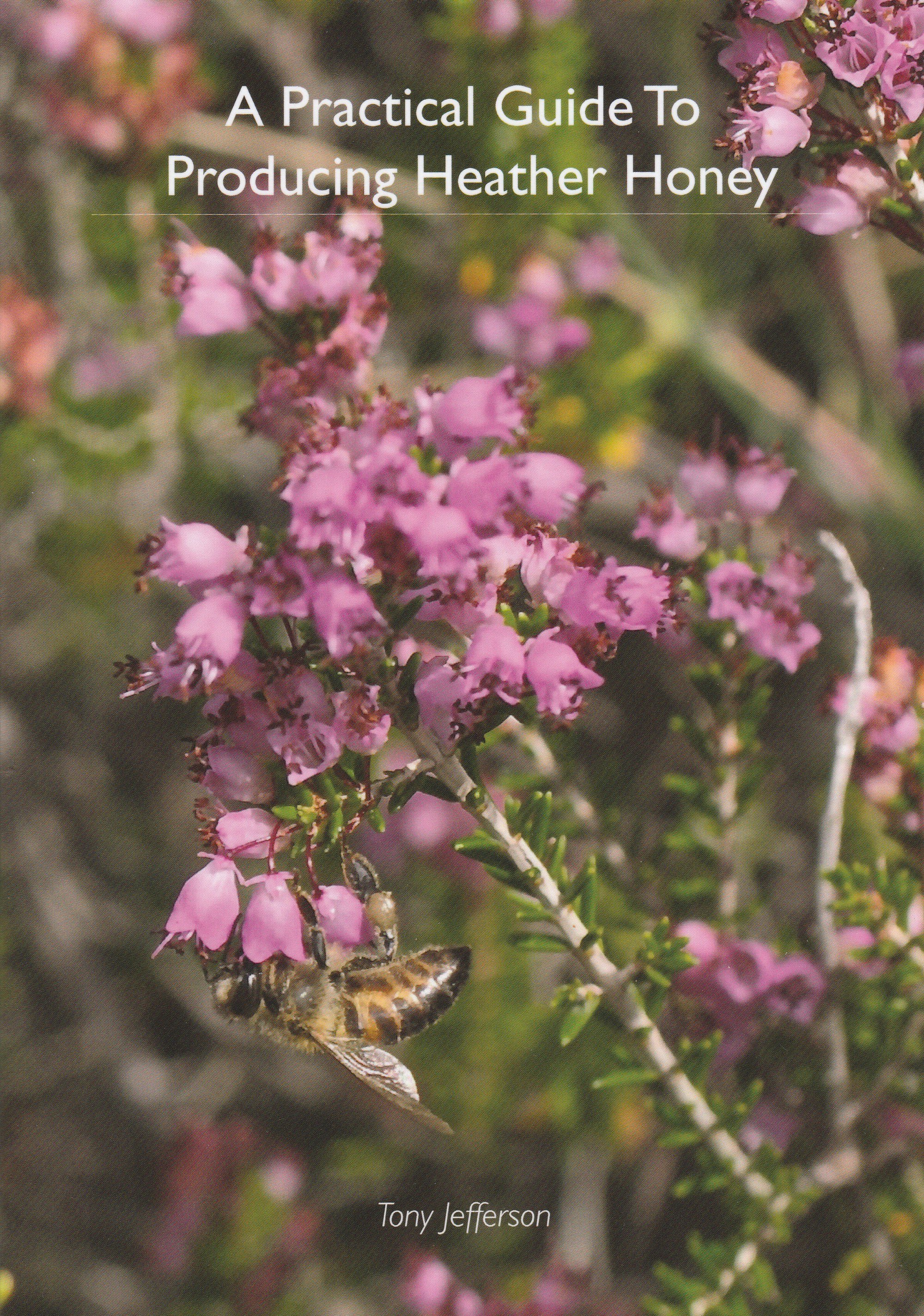
I attended a very good lecture on “Queen Selection and Introduction” presented by Margaret Thomas for ESBA last week. It was the first of the ‘Winter Lectures’ organised by ESBA. These lectures always promote an interest in beekeeping, are motivational, and are timed to take place when practical beekeeping is on-hold.
Dundee Flower & Food Festival 2019
I managed to achieve 3rd prize for my soft-set honey at the Dundee Flower & Food Festival this year. The rules didn’t permit me to submit my entries as a novice this year so I was competing with the big boys and girls 🙂
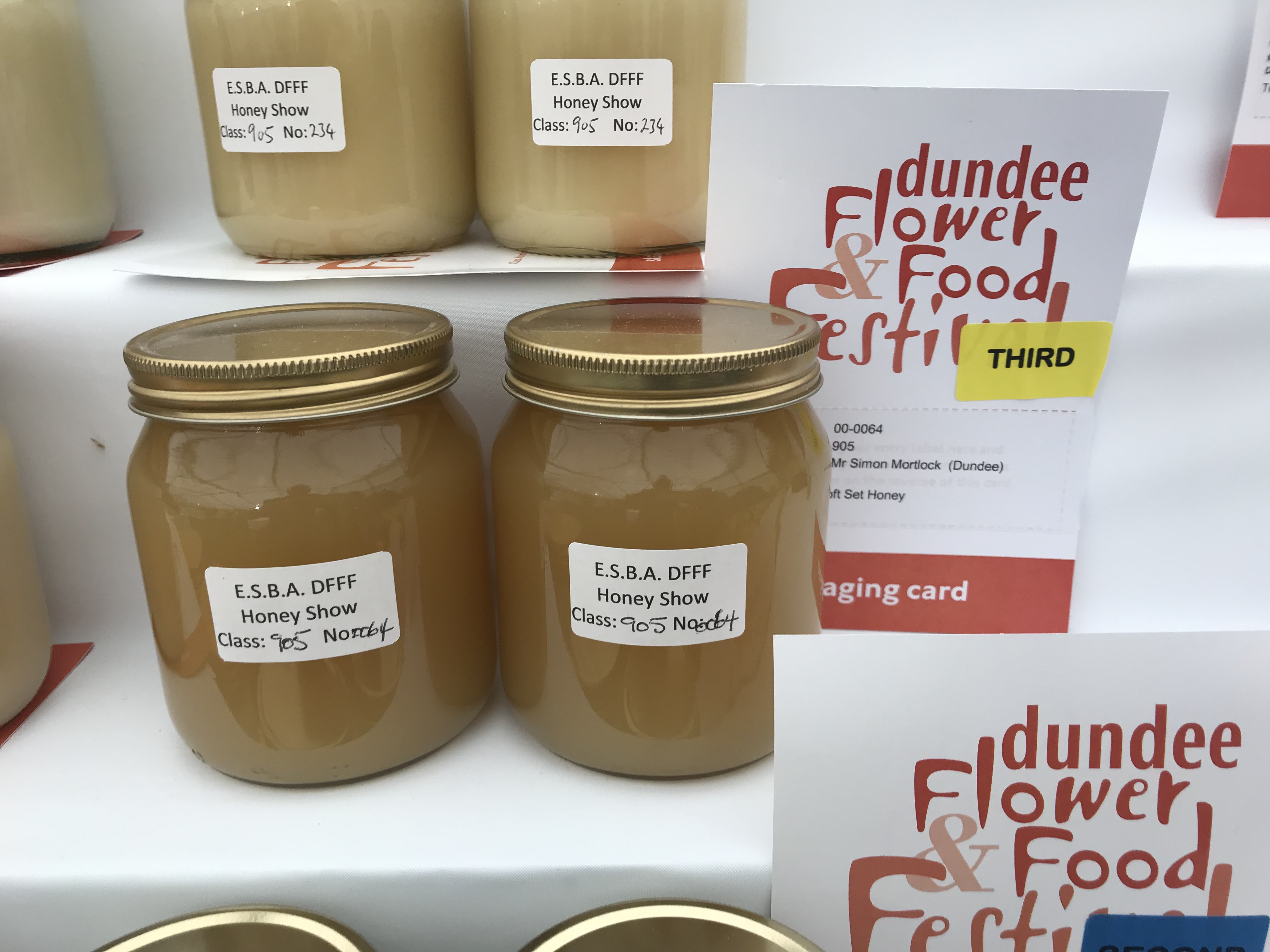
Mixed Fortunes, But Mostly Positive
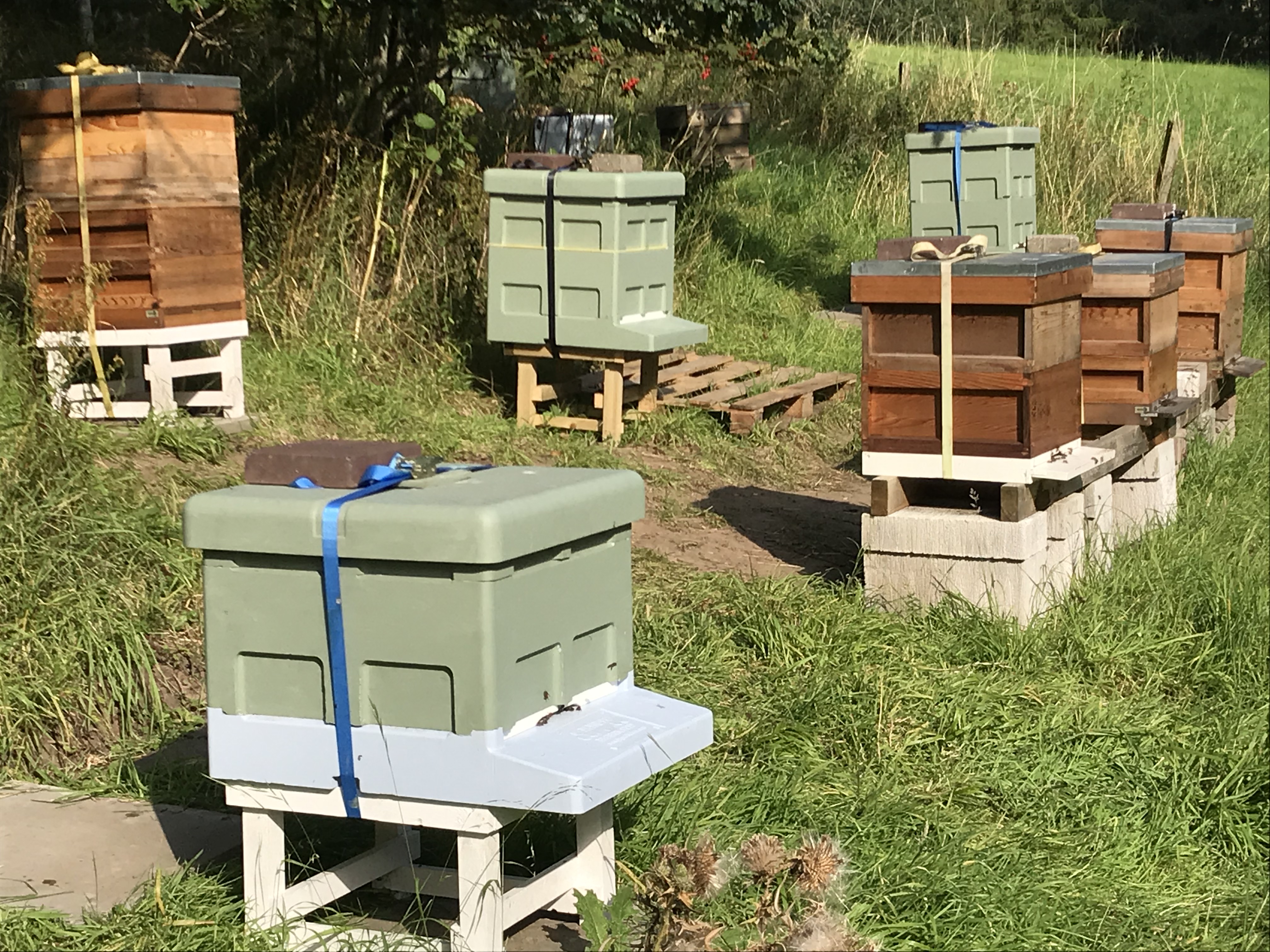
The last two months have flown by. This year I have been concentrating on ‘increase’. There were times when I thought my endeavours would not be fulfilled. However the bees have their own time scale and it just doesn’t do to be impulsive or indeed to be too eager when managing your bees!
At the start of March I had two colonies of black bees (AMM). One of these colonies still had a 2015 queen and the other had a 2018 queen. I bought a 3rd colony (Carniolan bees) at the end of March that had a 2018 queen. Now, at the end of August, I have 6 colonies; two colonies of Carniolan bees and 4 colonies of Black bees. They comprise 5 hives and 1 nucleus – all with mated queens that are laying and all with 2019 queens with the exception of one 2018 queen. It has been a lot of work to get this far.
I had my Basic Beekeepers Exam on 10th July. The week prior to taking the exam I kept wondering why I was putting myself through it. It’s not essential but it does concentrate the mind and it is a good motivation for learning. That’s not to say that at my stage in life I had thought I would have been finished with exams by now and so anxiety reigned for a while 🙂 I passed with a distinction so a state of calm overcame all the anxiety that I had hitherto experienced.
August seems to be a particularly bad month for wasps. Another colony I had, in the making, did not survive. It was weak and eventually queen-less. It had few bees, started laying drones, and had insufficient means to resist intrusion from wasps. So there were lessons a plenty from that experience.

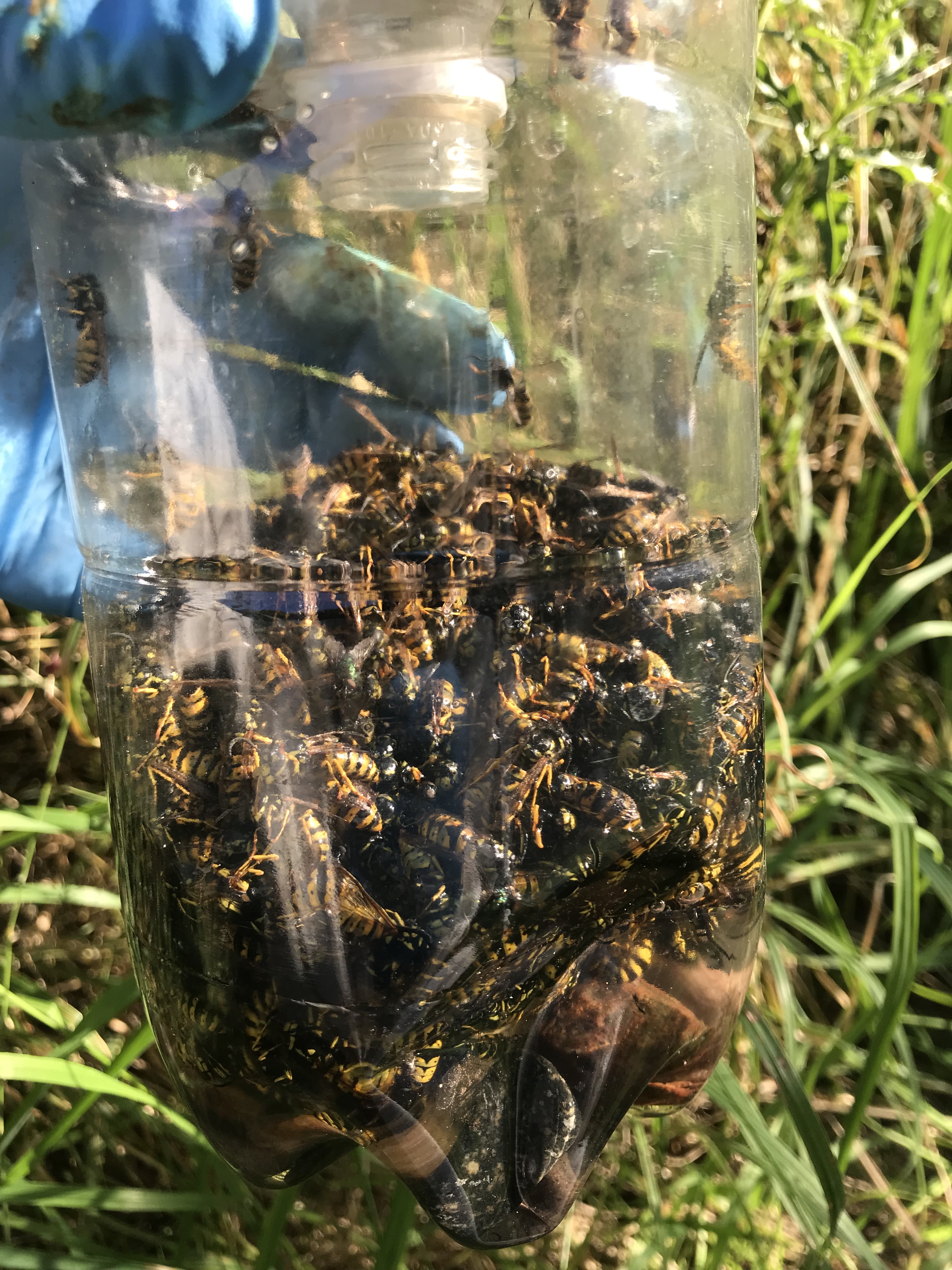
I had 3 wasp traps. The above trap was a home-made effort that worked well. Sugar syrup is used to attract the wasps and a thimble of vinegar discourages the honey bees from flying into the same trap!
Towards the end of August I am mindful that the honey crop needs to be removed, when possible, so that the bees can be prepared for winter i.e. by feeding them and administering medicine to combat the varroa mite. At the end of August there may still be some Himalayan Balsam around for forage but essentially the honey-flow is all but over.
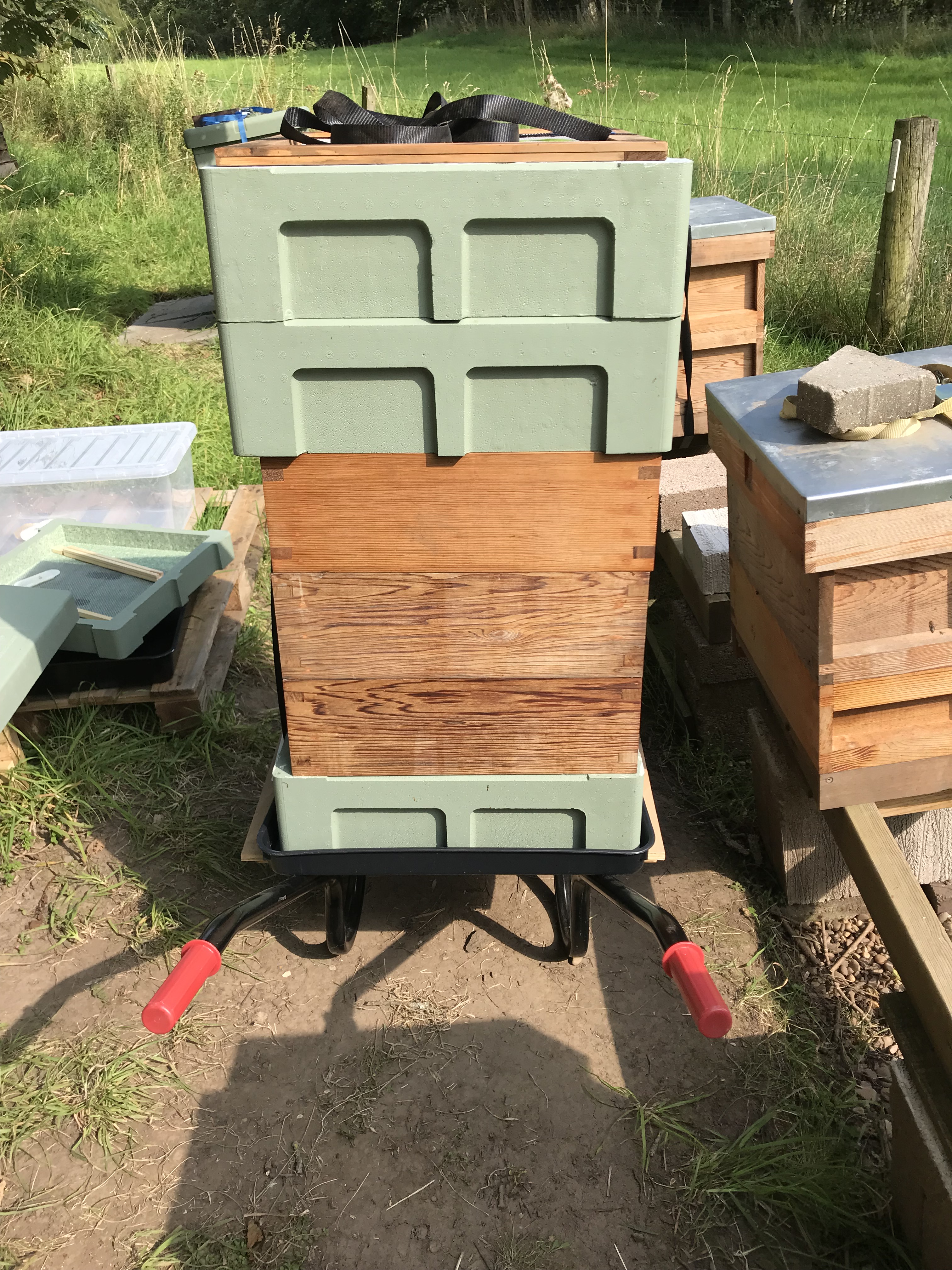
The supers came off and then I immediately applied APIVAR strips to each hive for Varroa control. These strips will be in the hive for a minimum of 6 weeks which means they will need to be removed from the hives around the middle of October. Therefore any delay in applying these strips means a delay in their removal and that is not a good prospect given the potential weather conditions in late October.

Some of the reward for effort put in during the year, apart from the enjoyment of simply watching the activity of the bees, is the farming of honey.
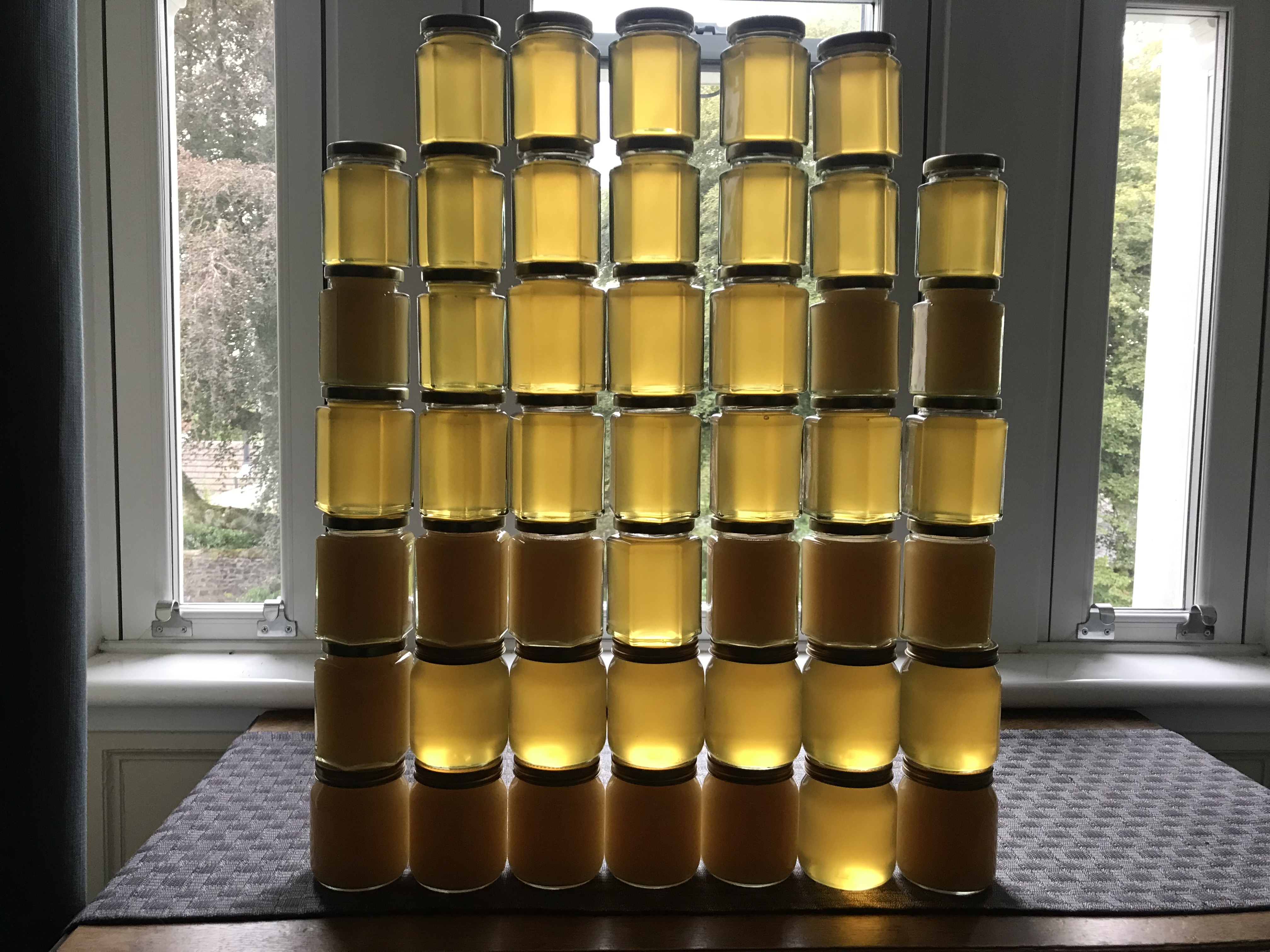
Some of the honey I extracted this year is shown above. Some is light clear honey. And some is my first attempt at making soft-set honey. I will be submitting both types into the Dundee Flower and Food Festival. https://www.dundeeflowerandfoodfestival.com/
To keep around half a dozen hives can be time consuming for a hobbyist, especially when nearly all of those hives consist of a double brood box. So my plan, for now, is to try and maintain this number. Without making increase next year I hope to maximize the honey crop! Living in hope……….
Last night I went to feed only 1 of the colonies (that I felt needed feeding straight away) and I provided it with 5 litres of inverted syrup. I will start feeding all the other colonies on Monday. I have to be prepared to give each colony between 10 and 13 litres of liquid stores. If each colony has 16-18kg of stores on board by the end of October they have a reasonable chance of surviving the winter. It is best to feed liquid stores in September. If you must feed in October then feed inverted syrup instead of sugar syrup. The bees have less work to do when processing the inverted syrup. And the inverted syrup will not ferment whereas sugar syrup may ferment if it is fed to the bees too late in the year.
There are many ways to learn. And I always receive a lot of useful information from ‘The Apiarist’: https://theapiarist.org/the-flow-must-go-on/
Footnote: After only 2 years of keeping bees I still think of myself as someone that keeps bees – a beginner. Perhaps, by the end of next year, I may come to regard myself as a beekeeper! Perhaps…….
